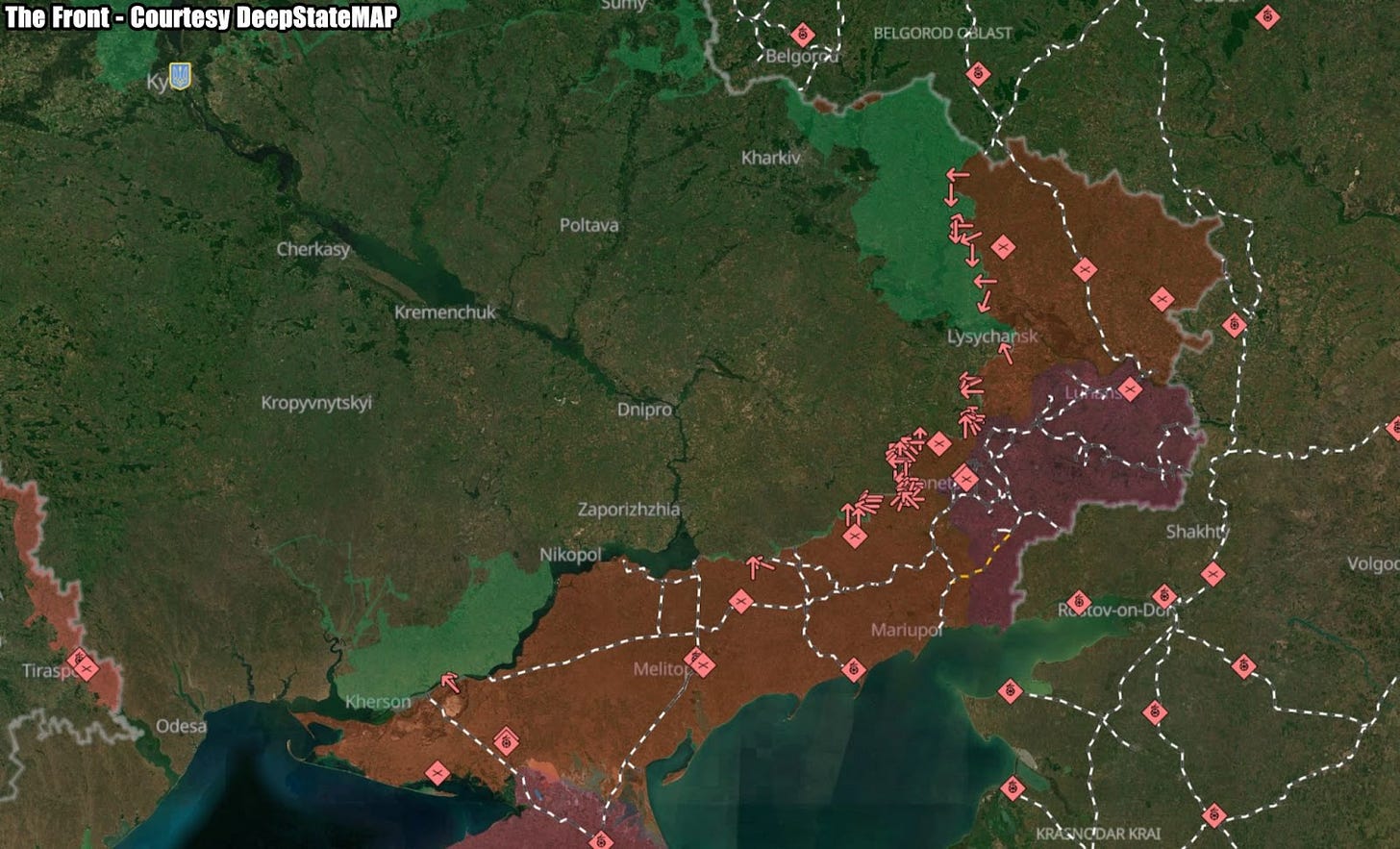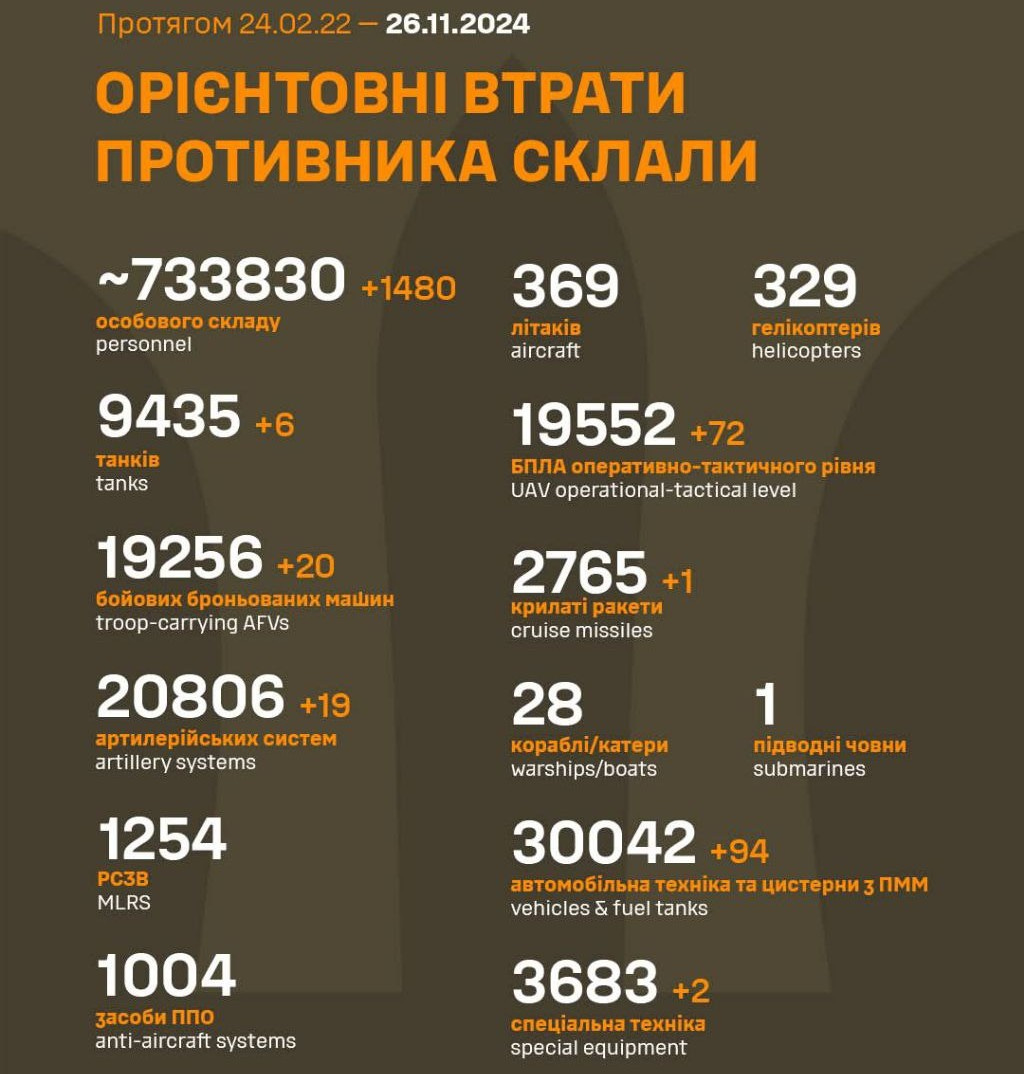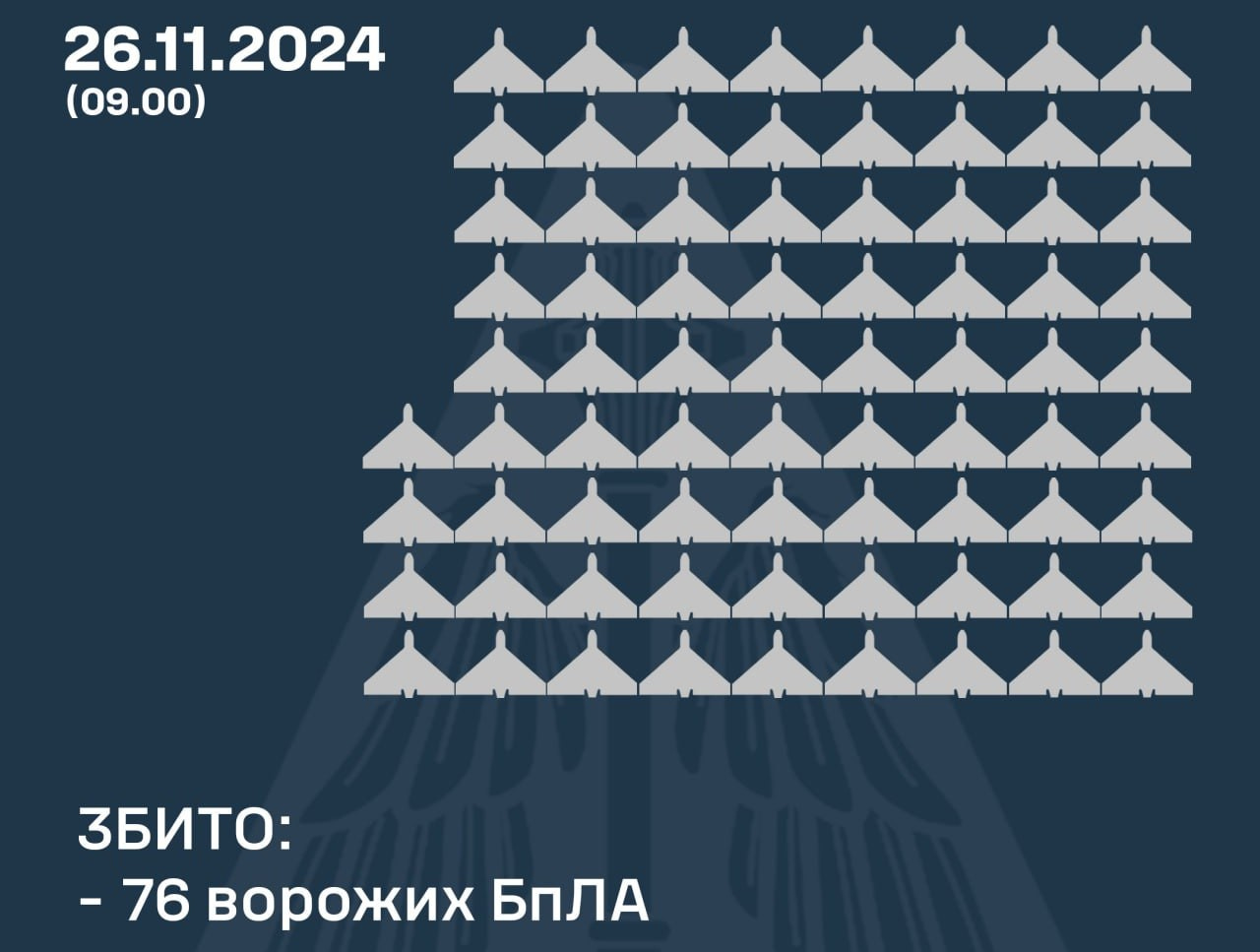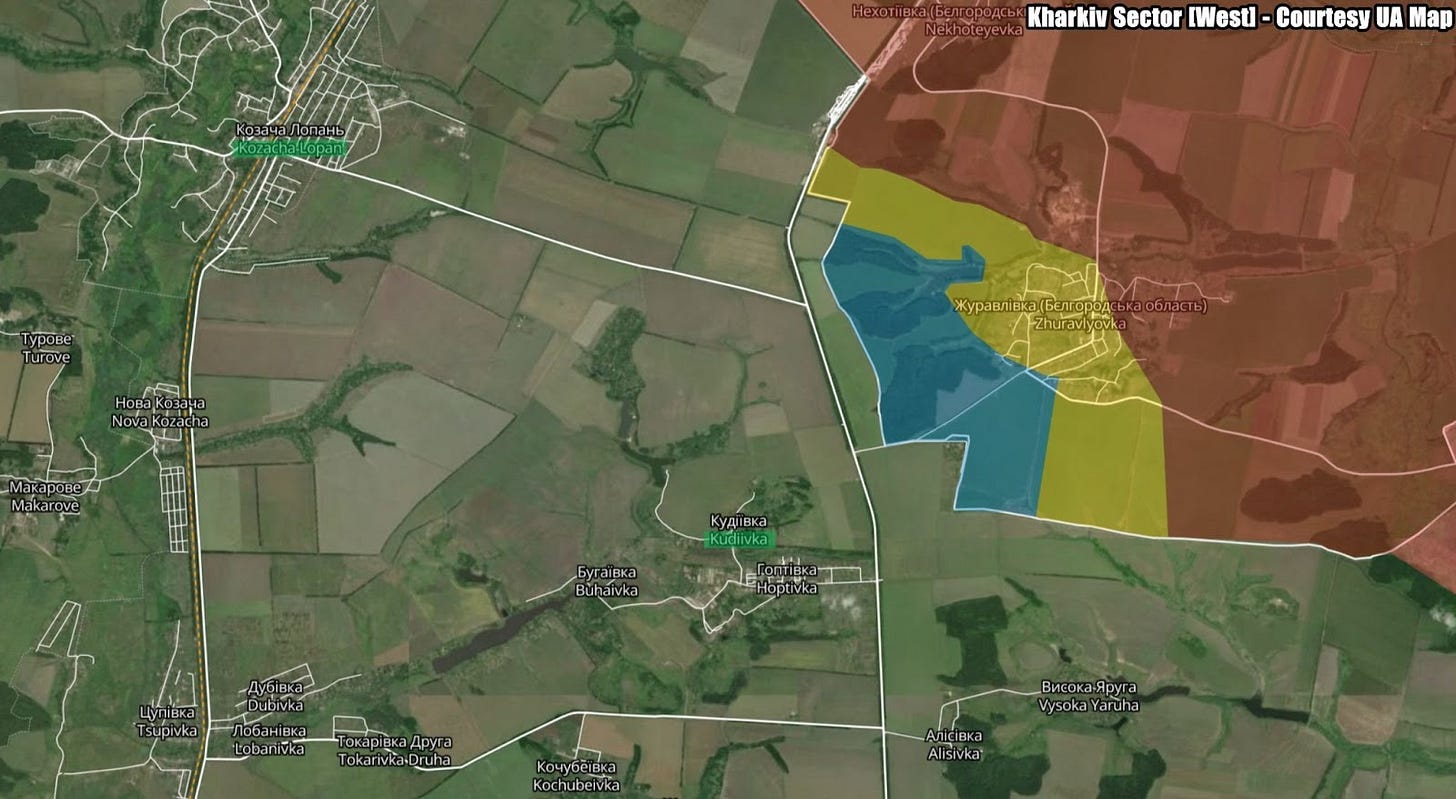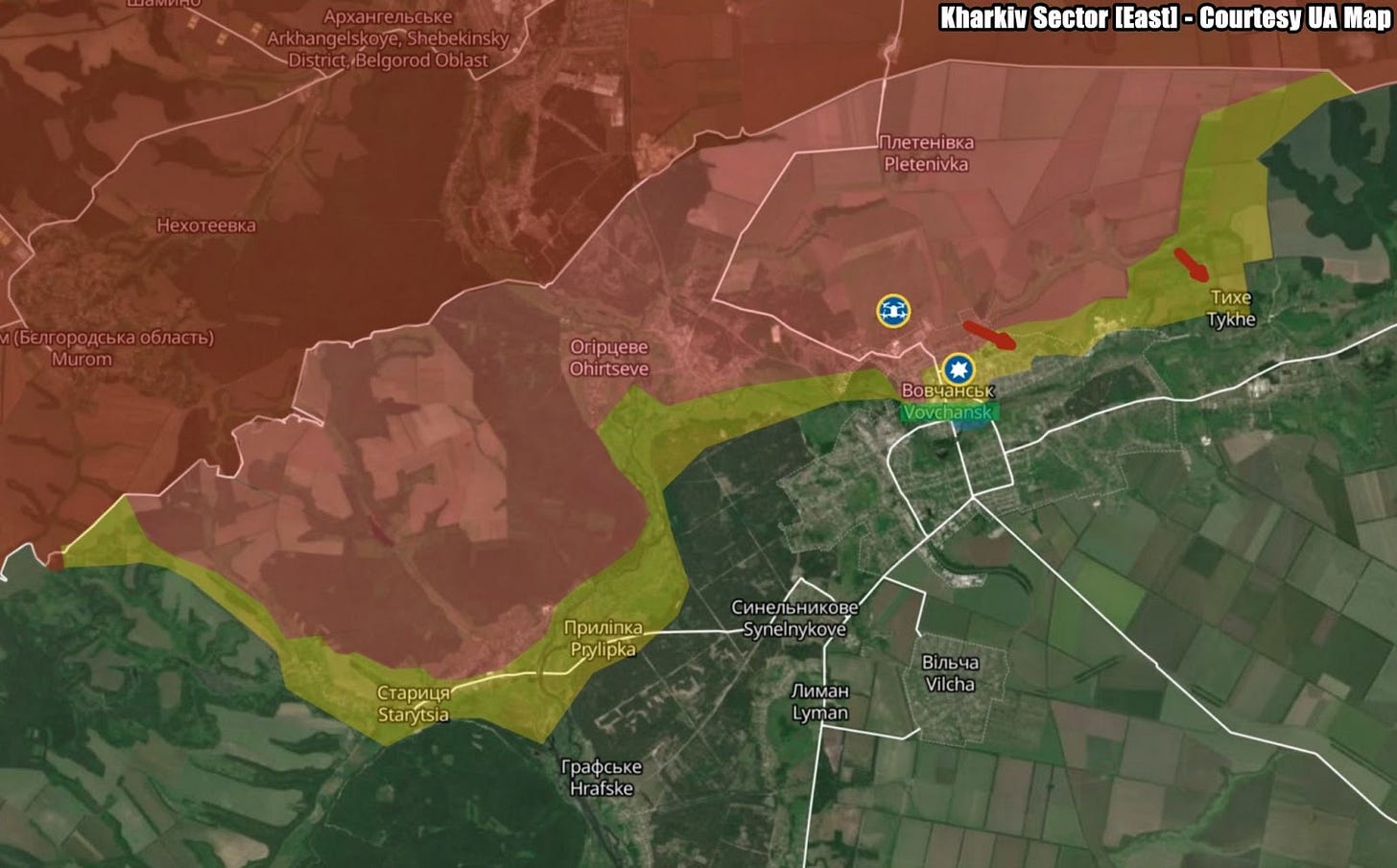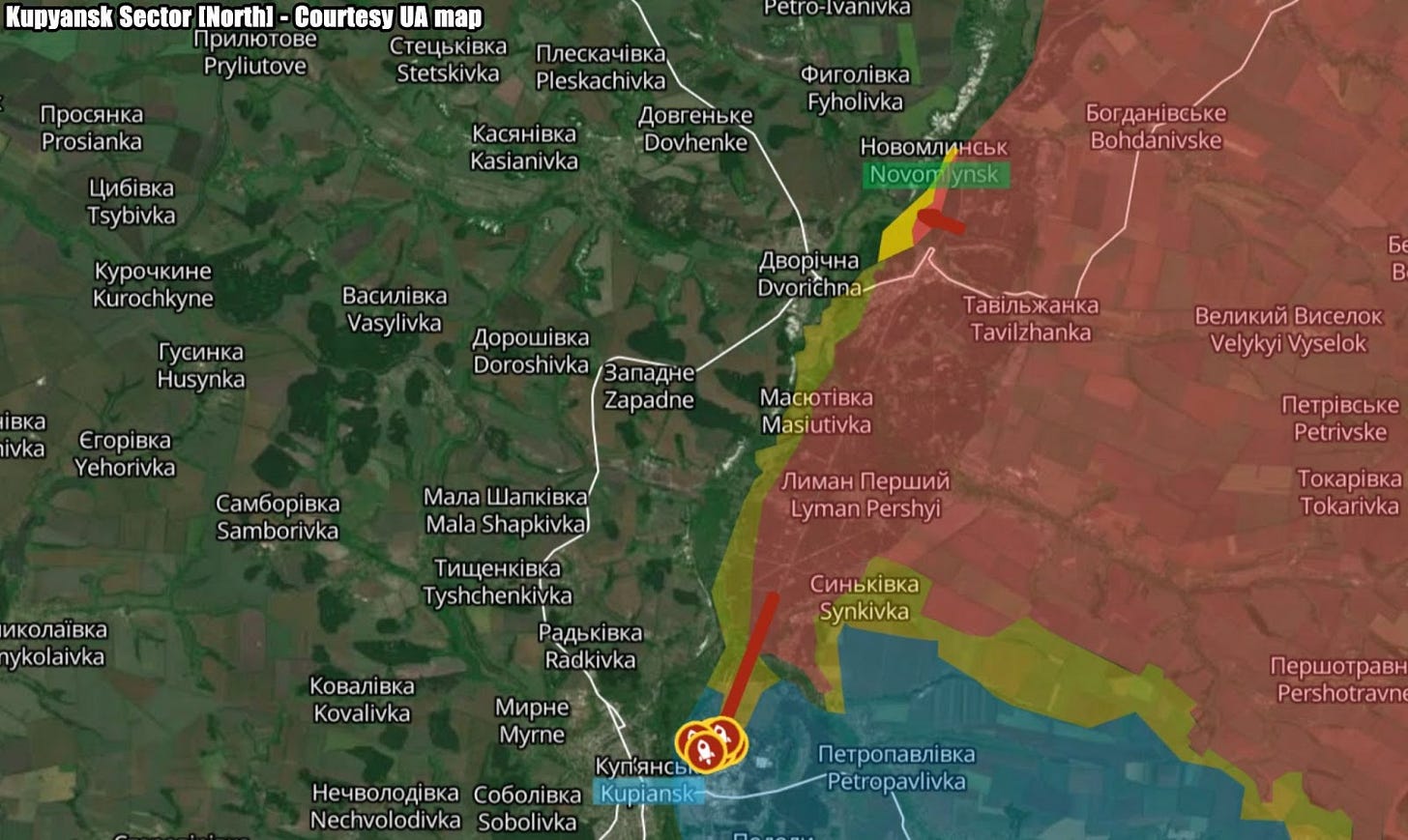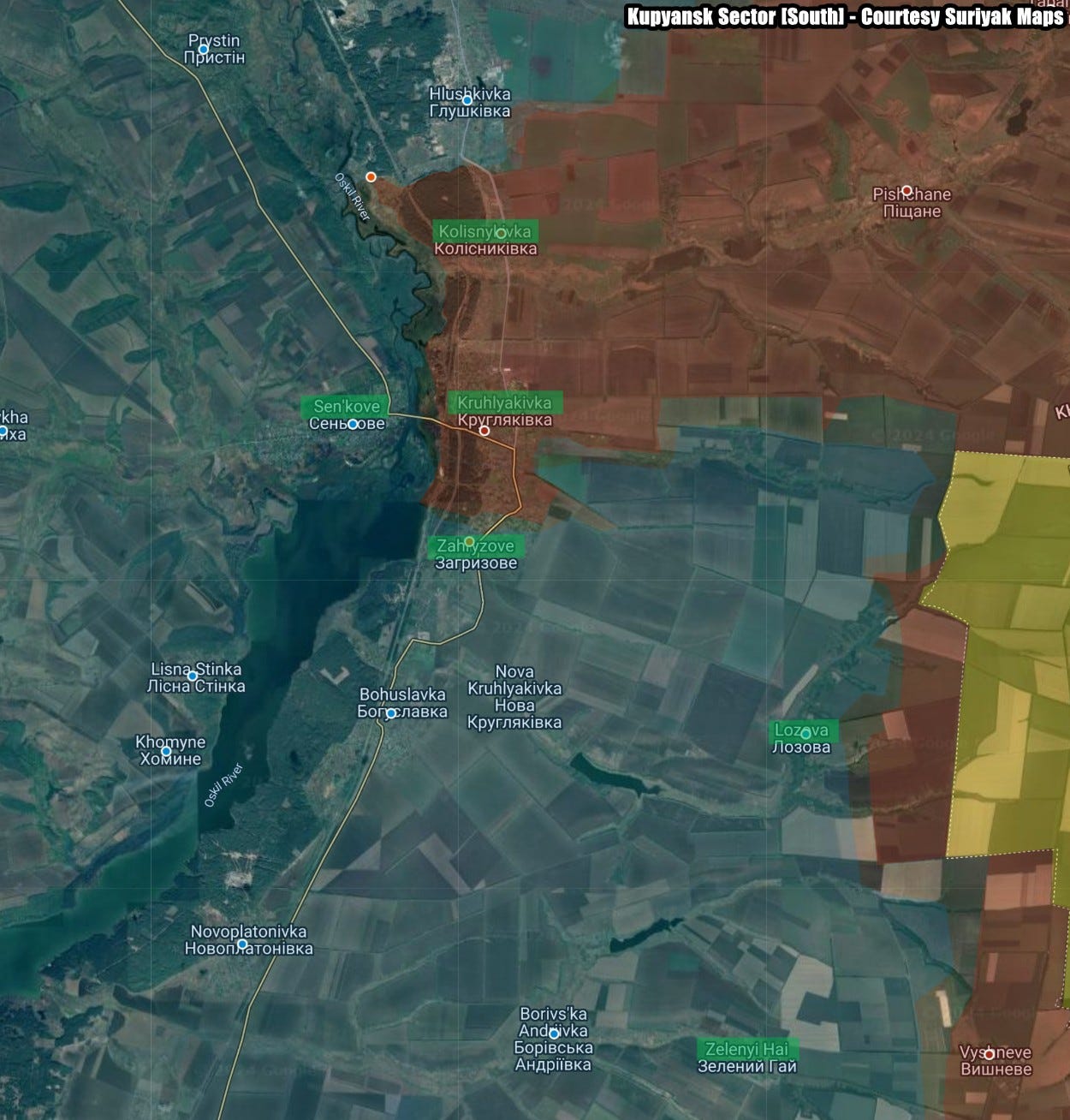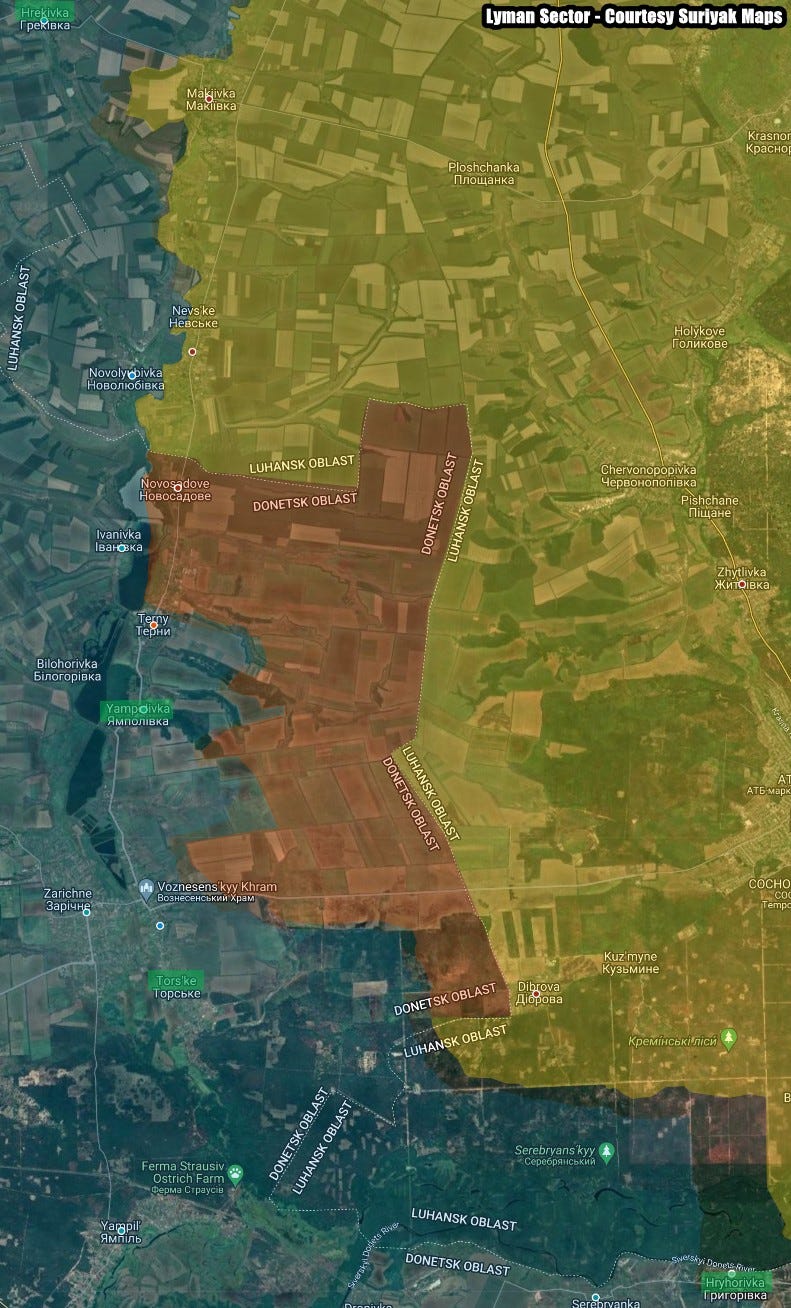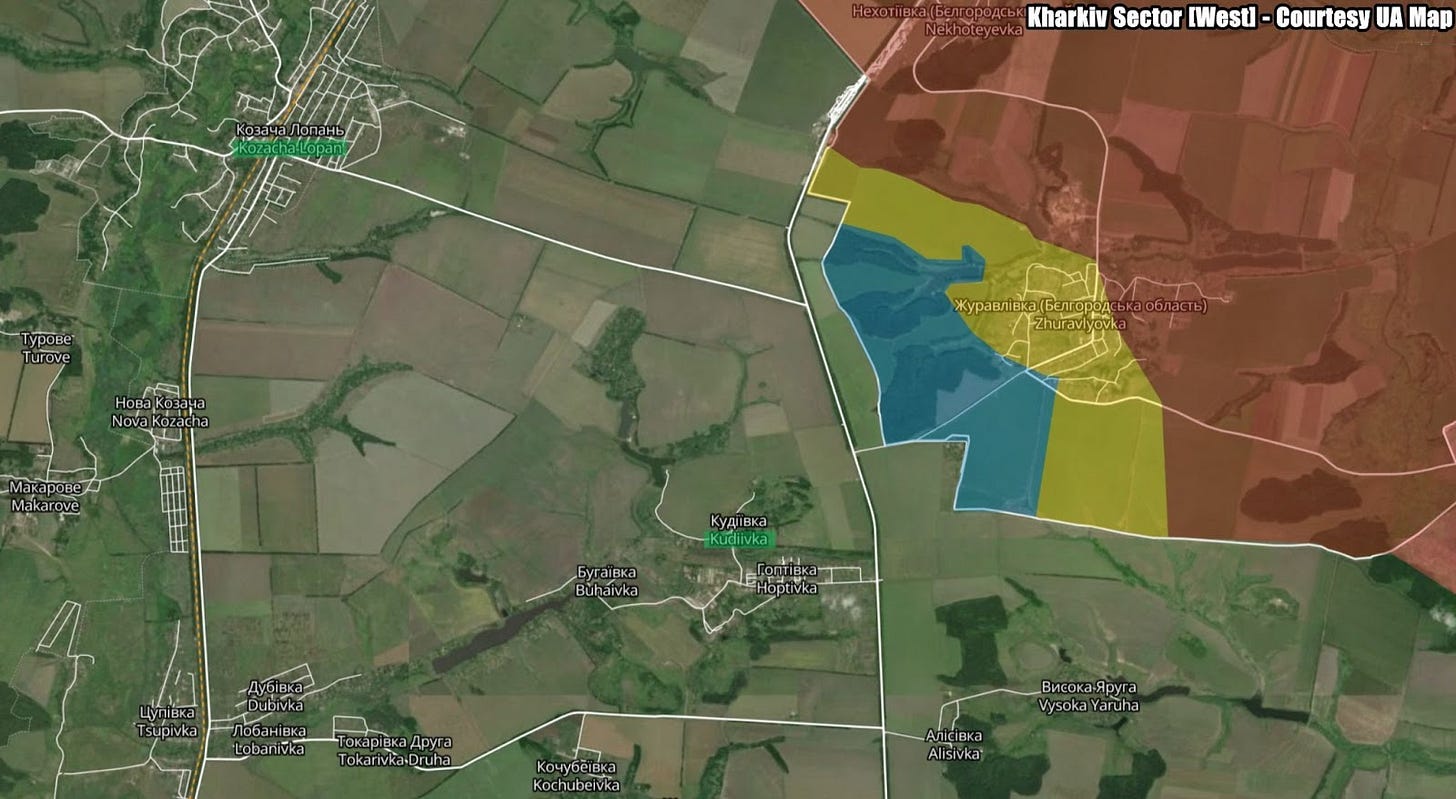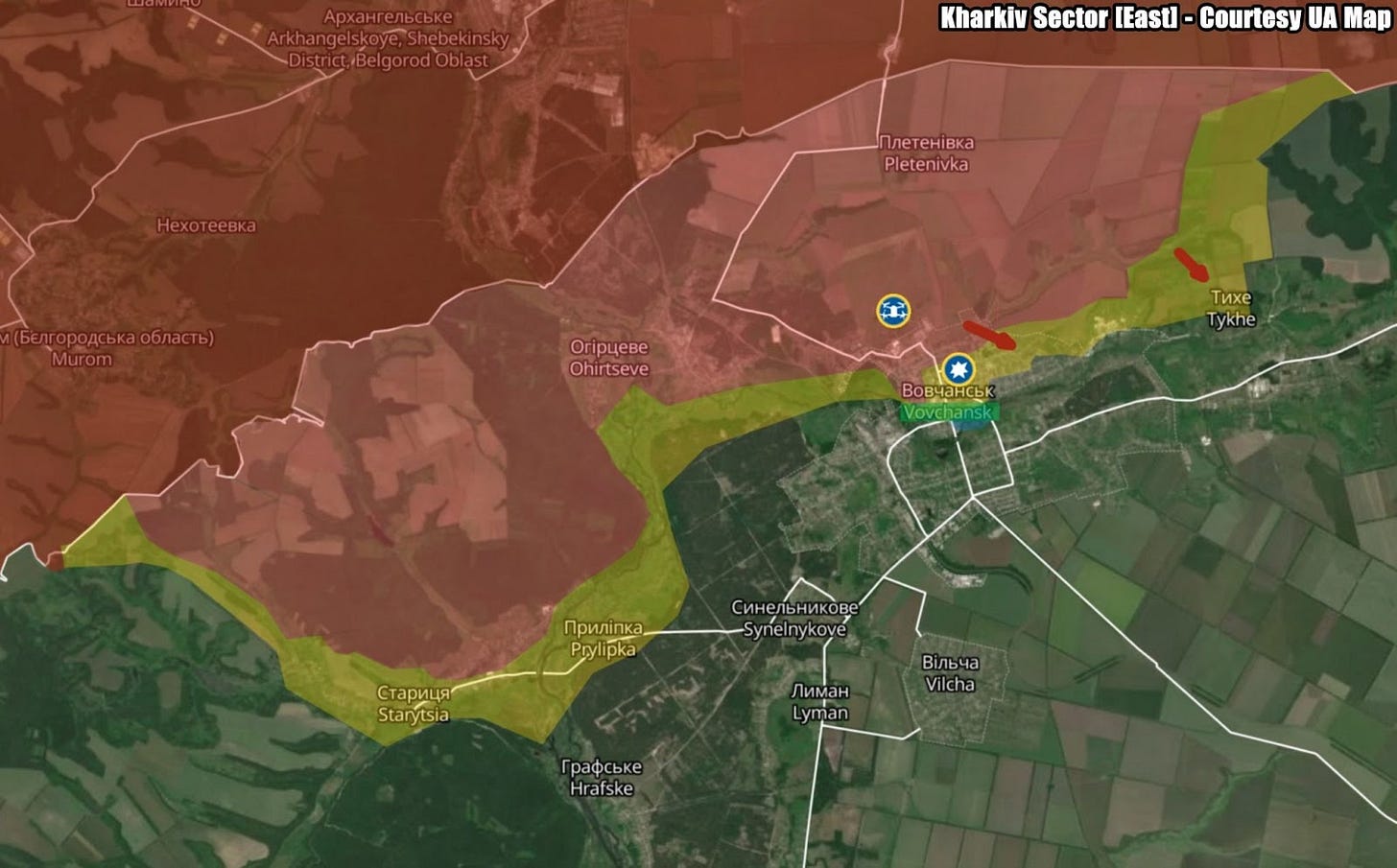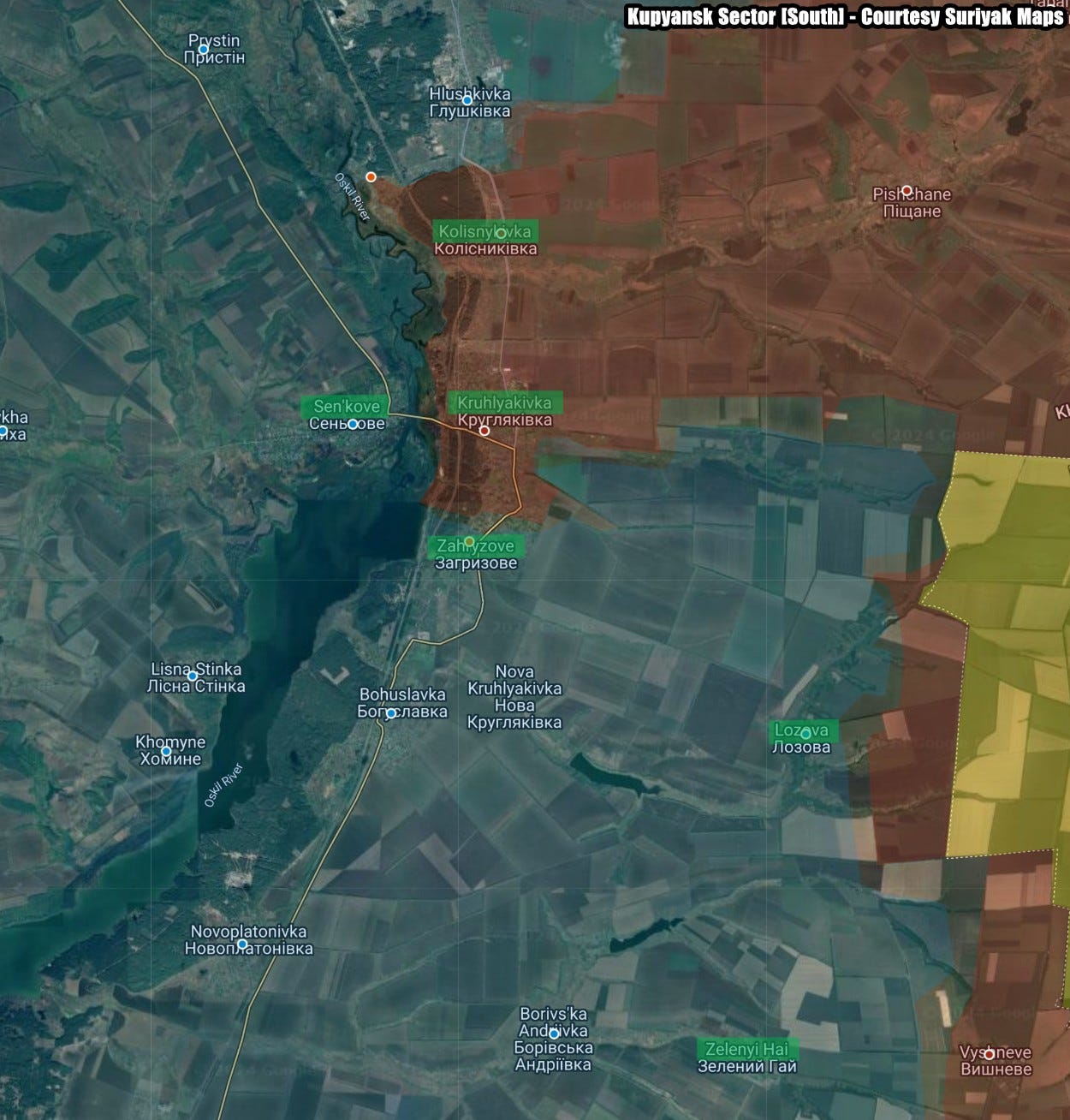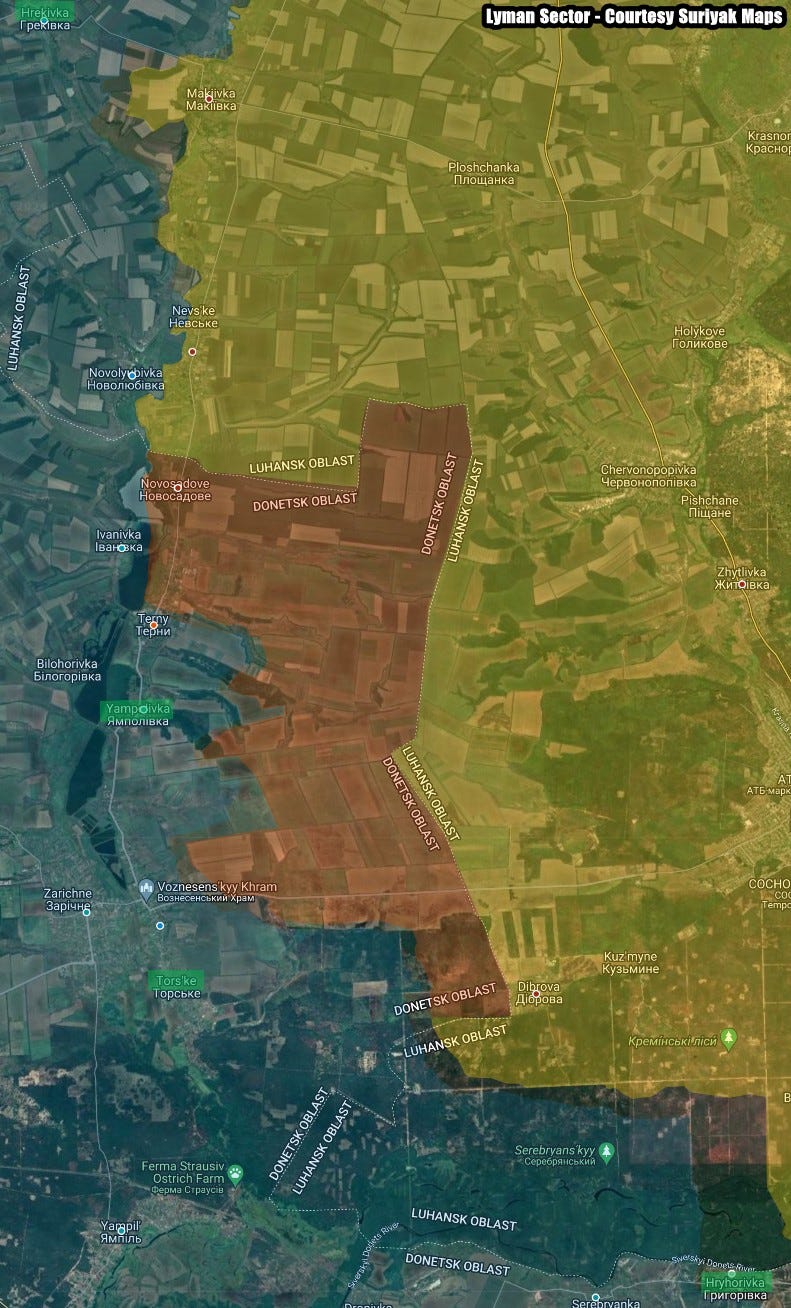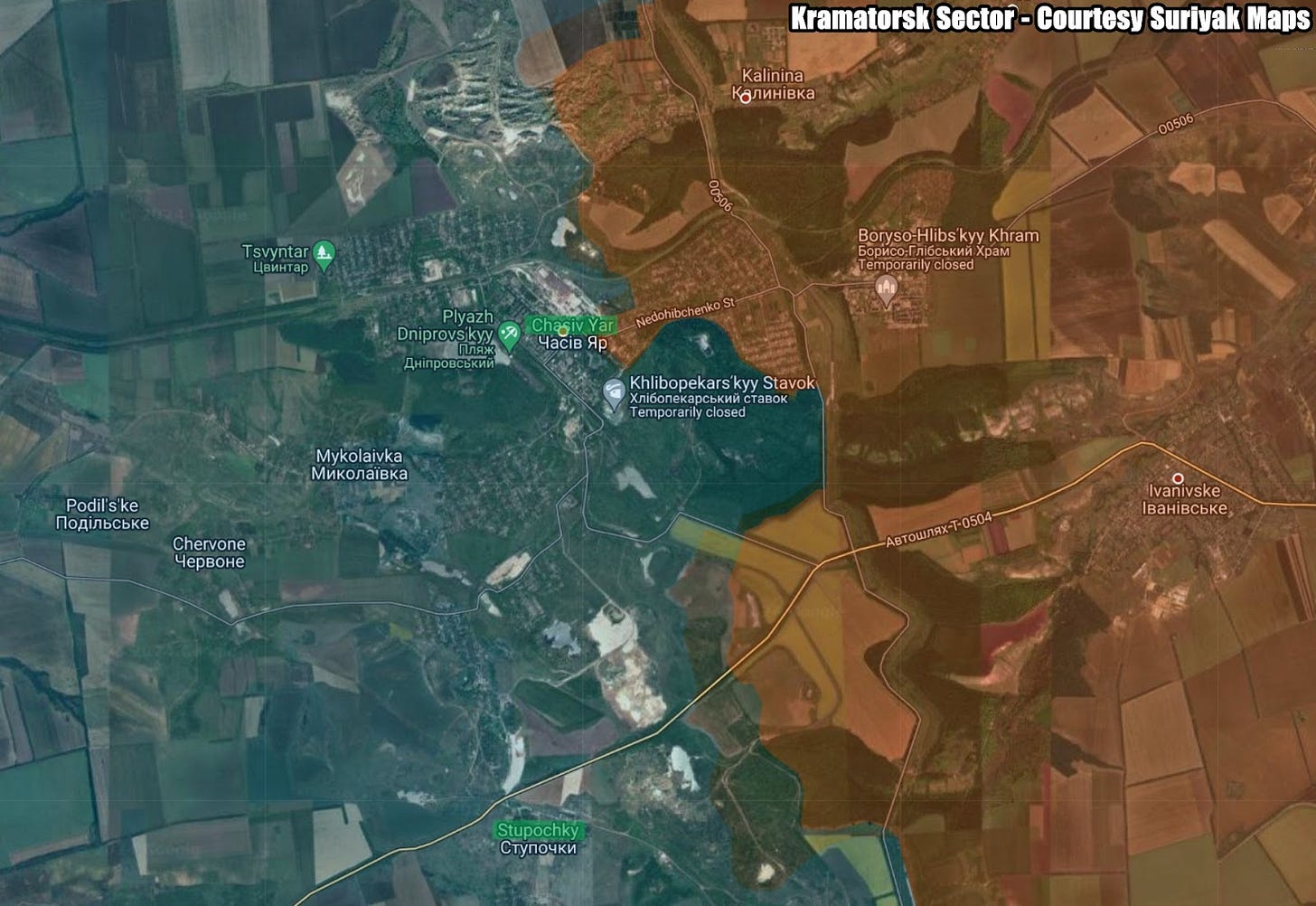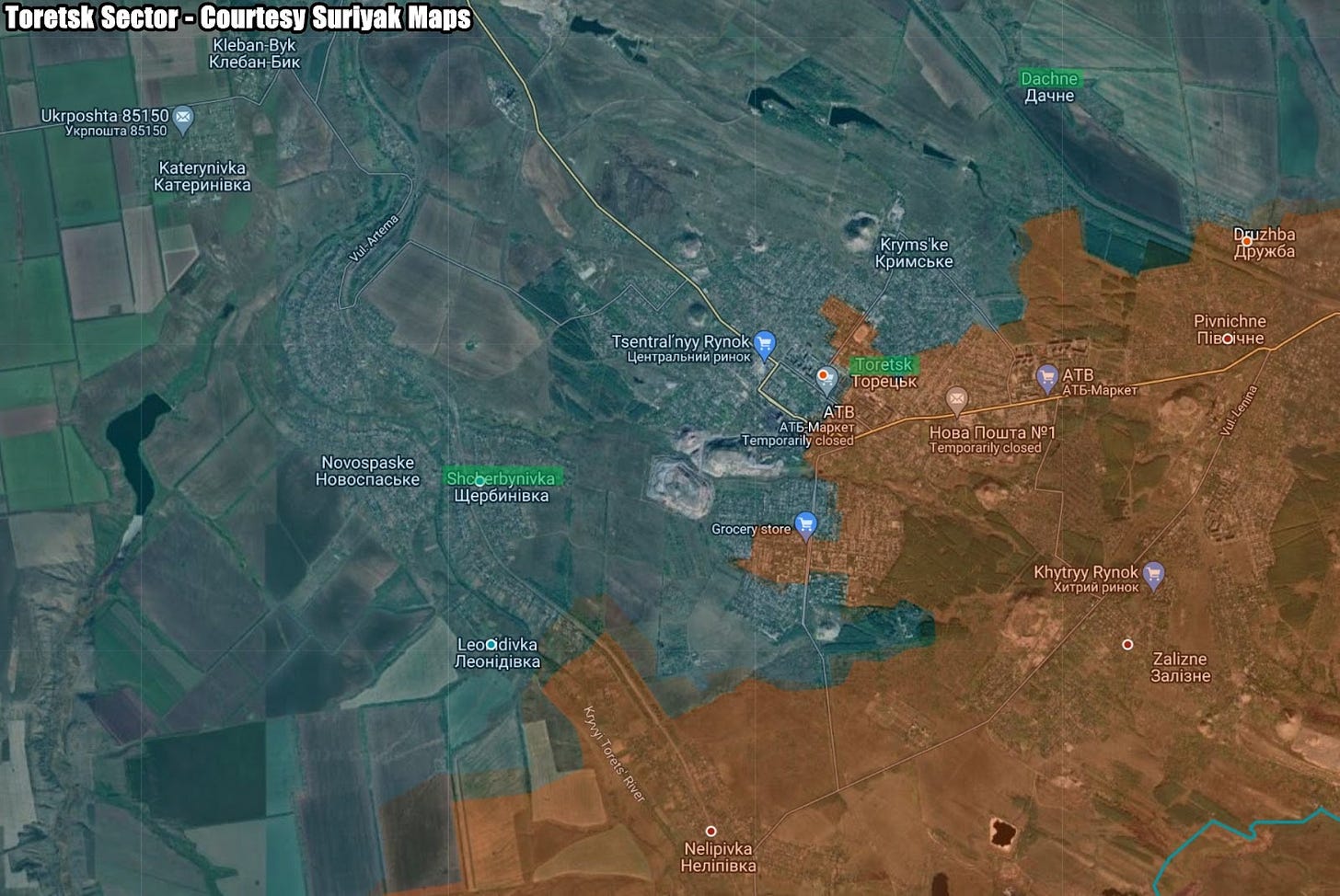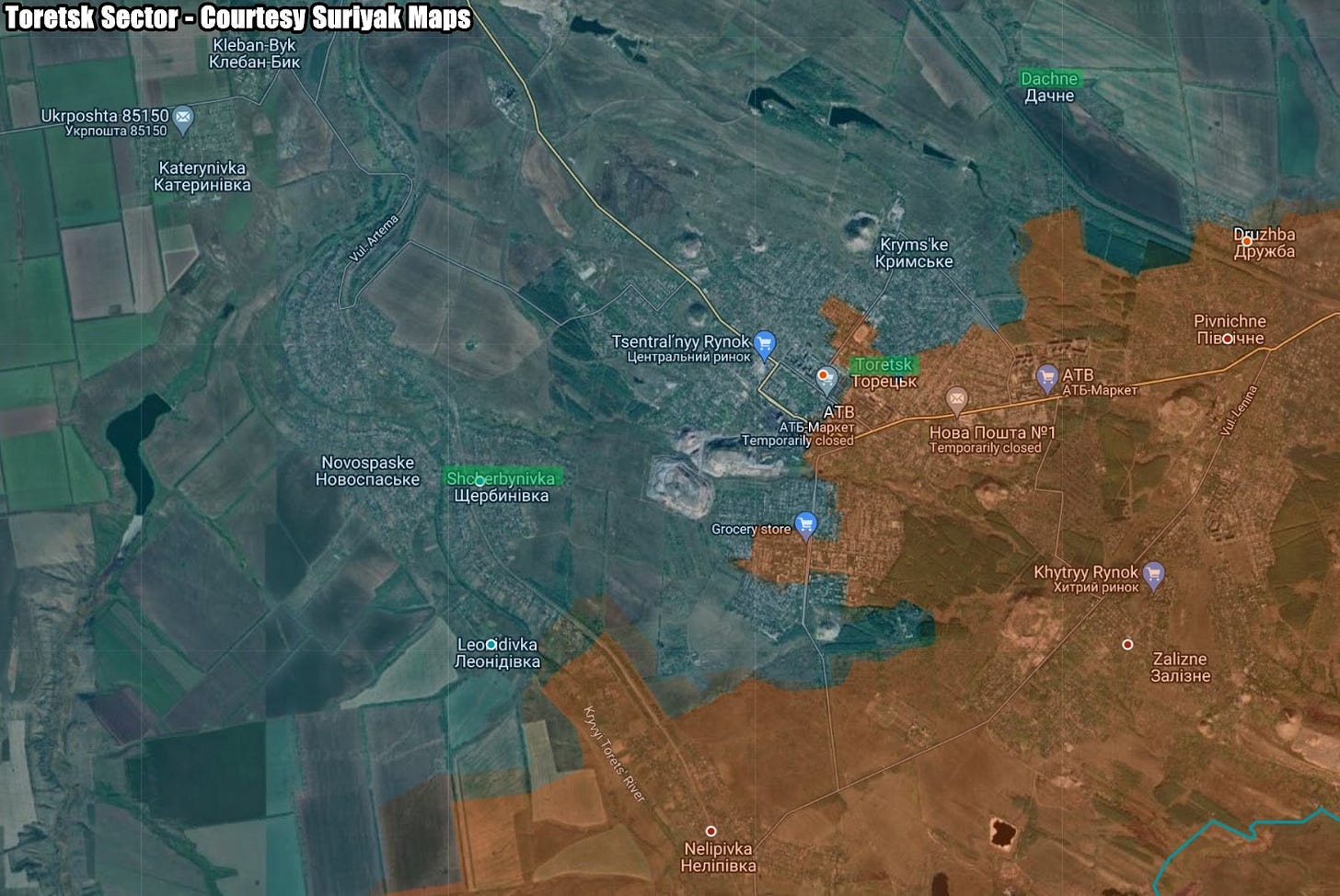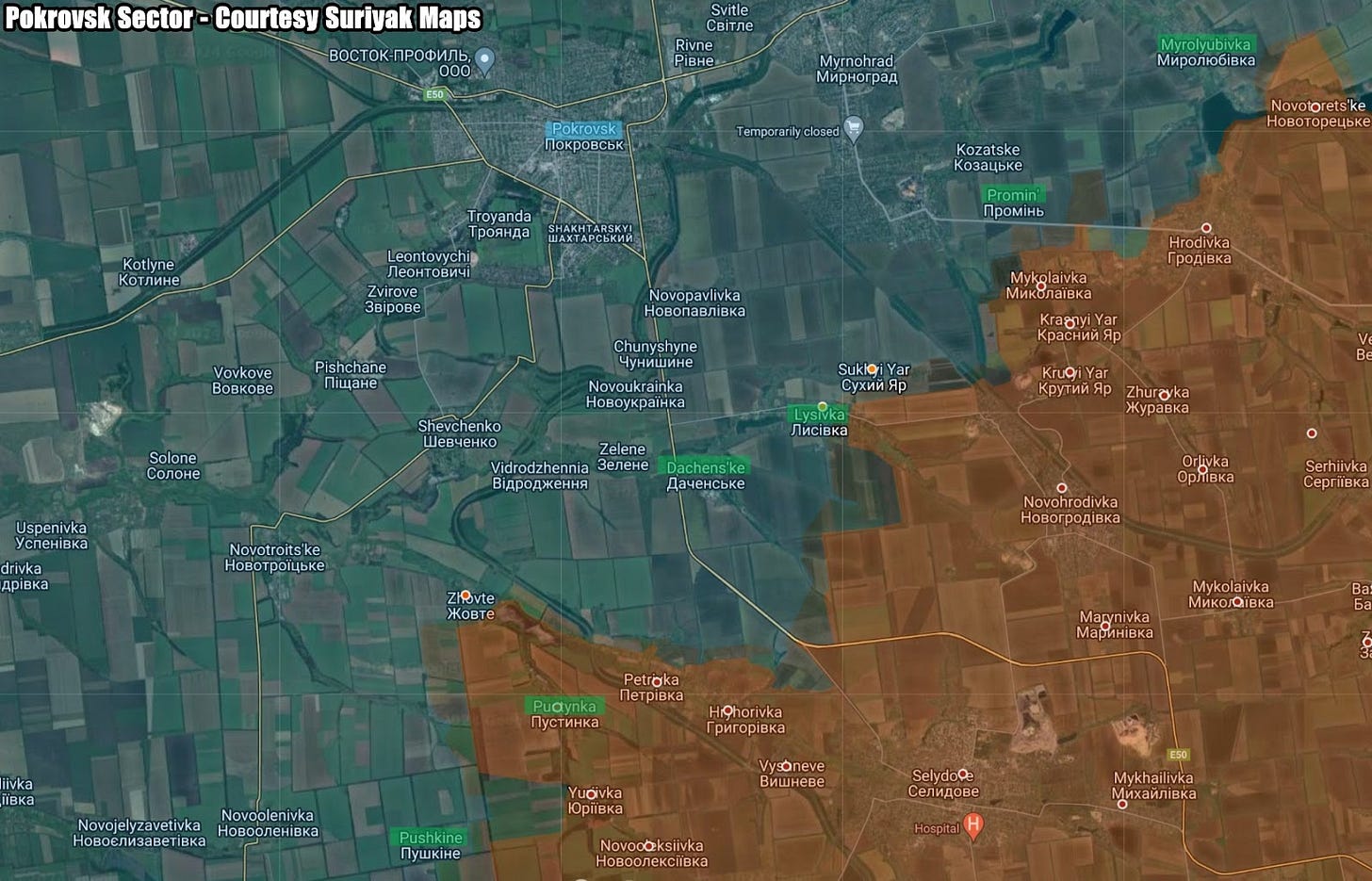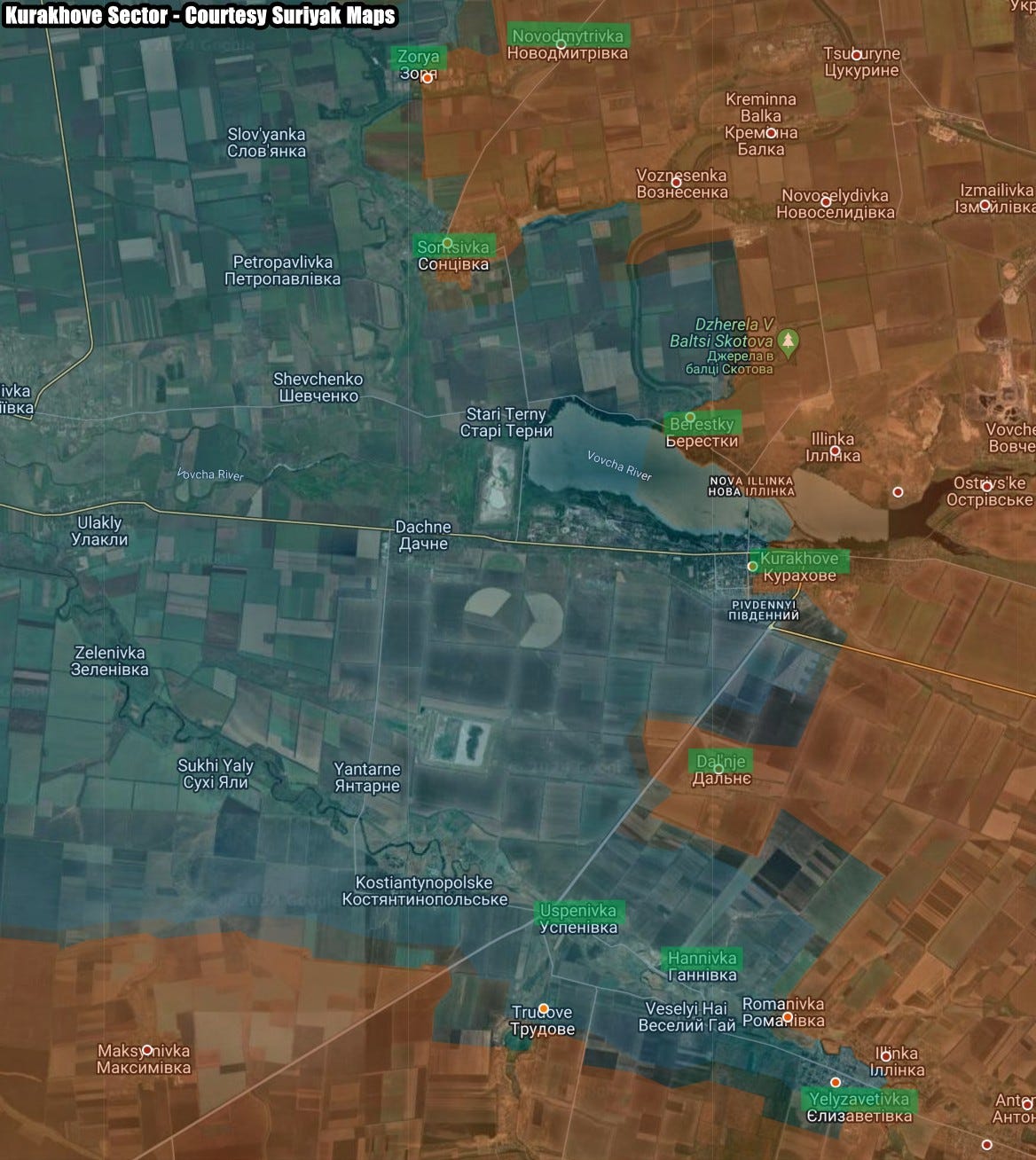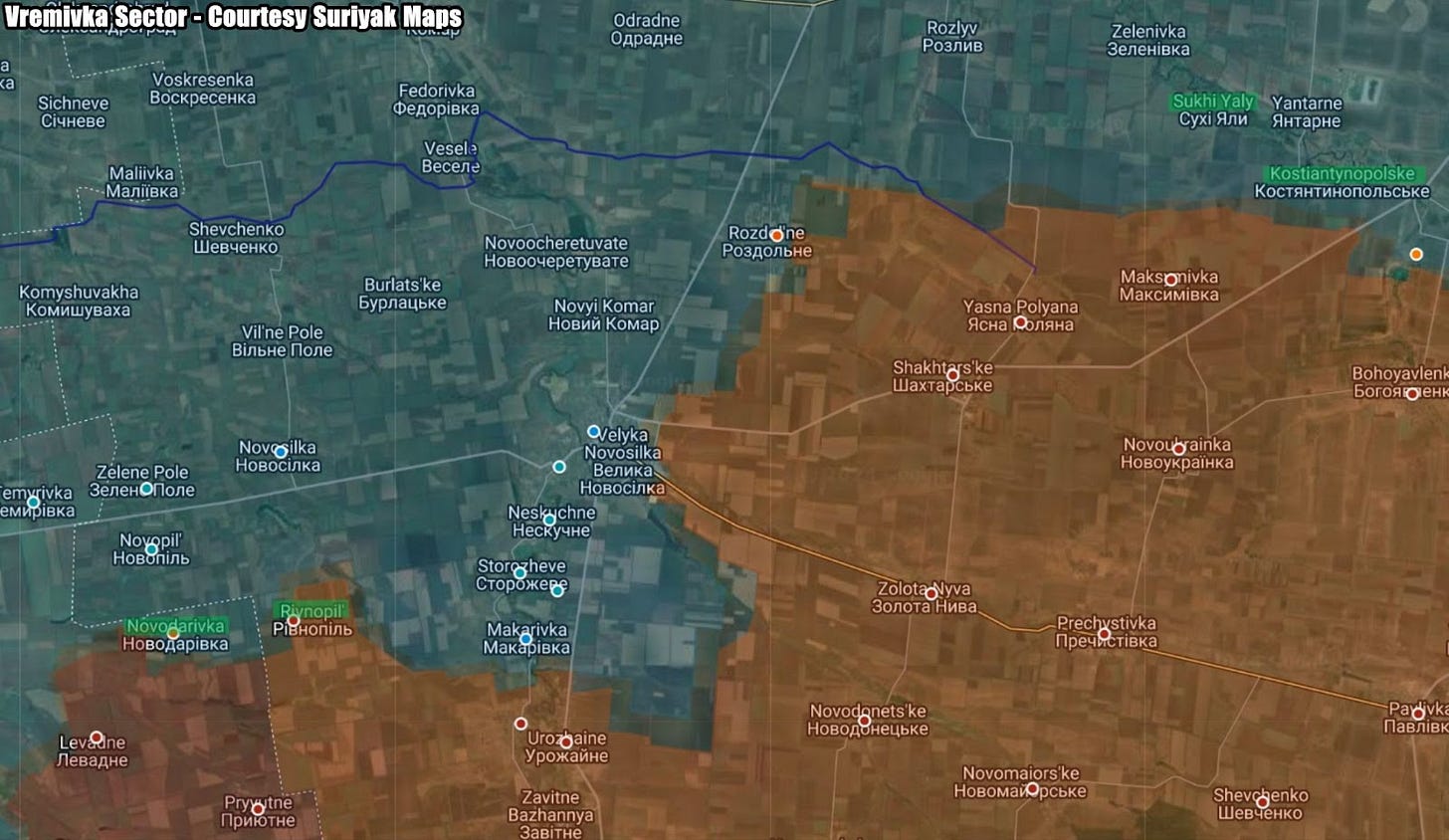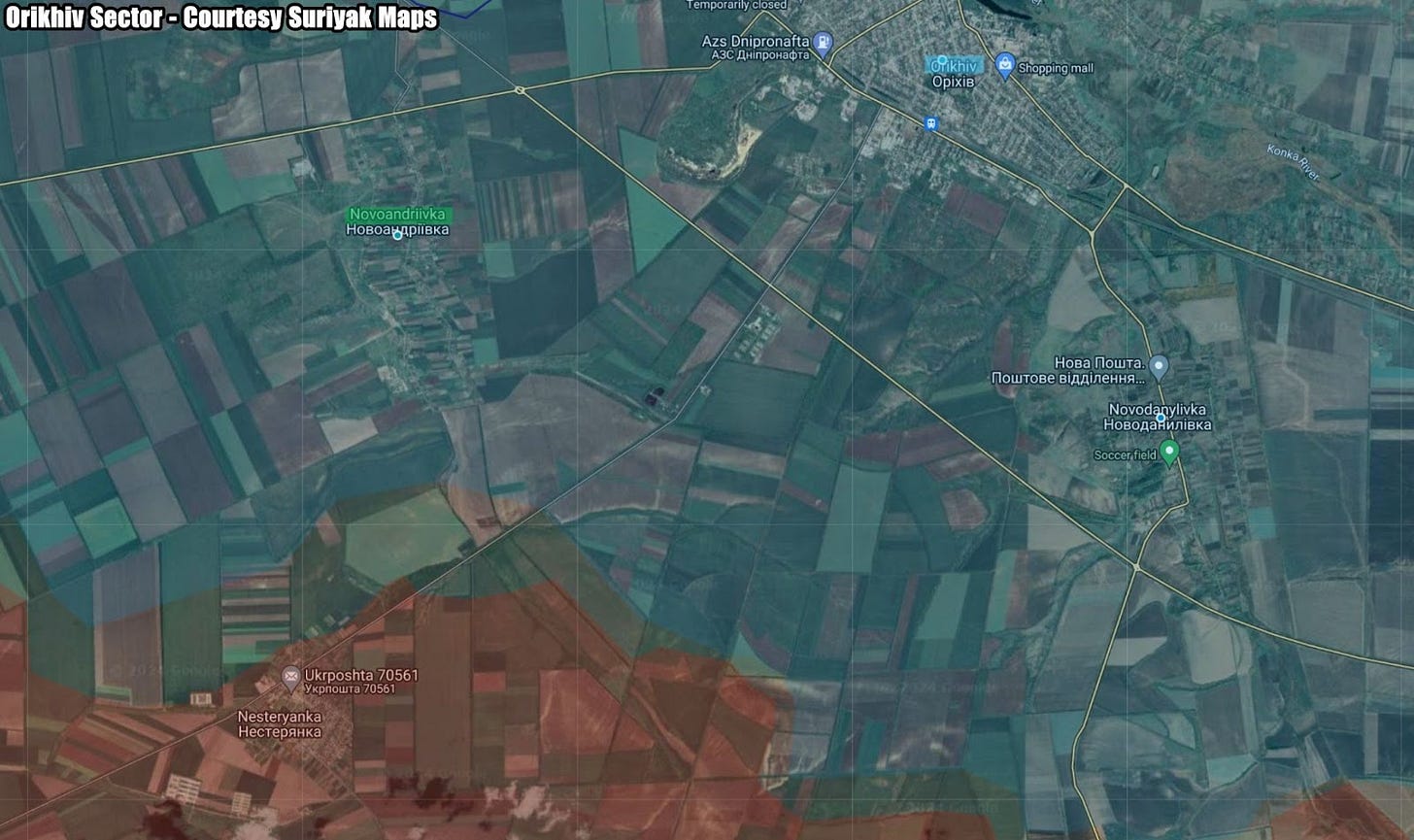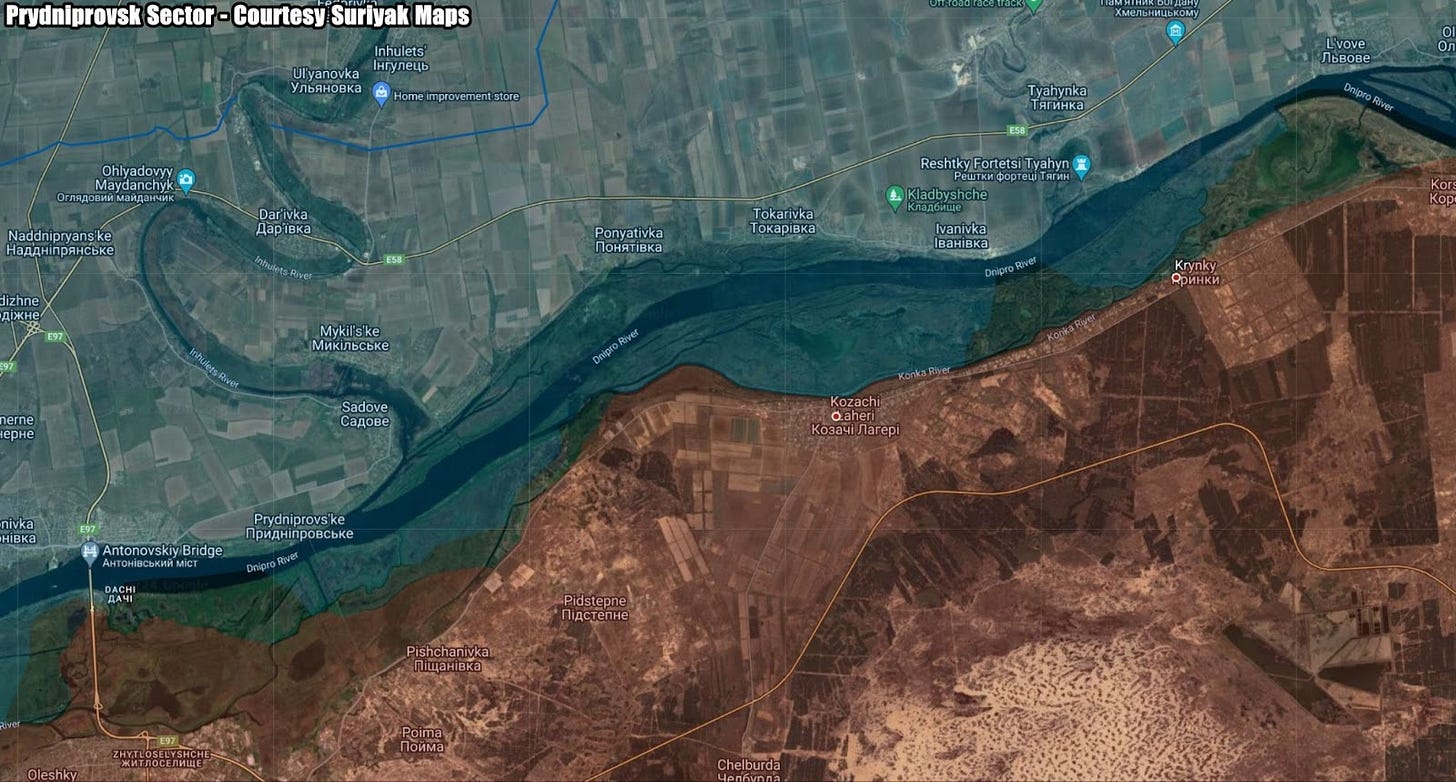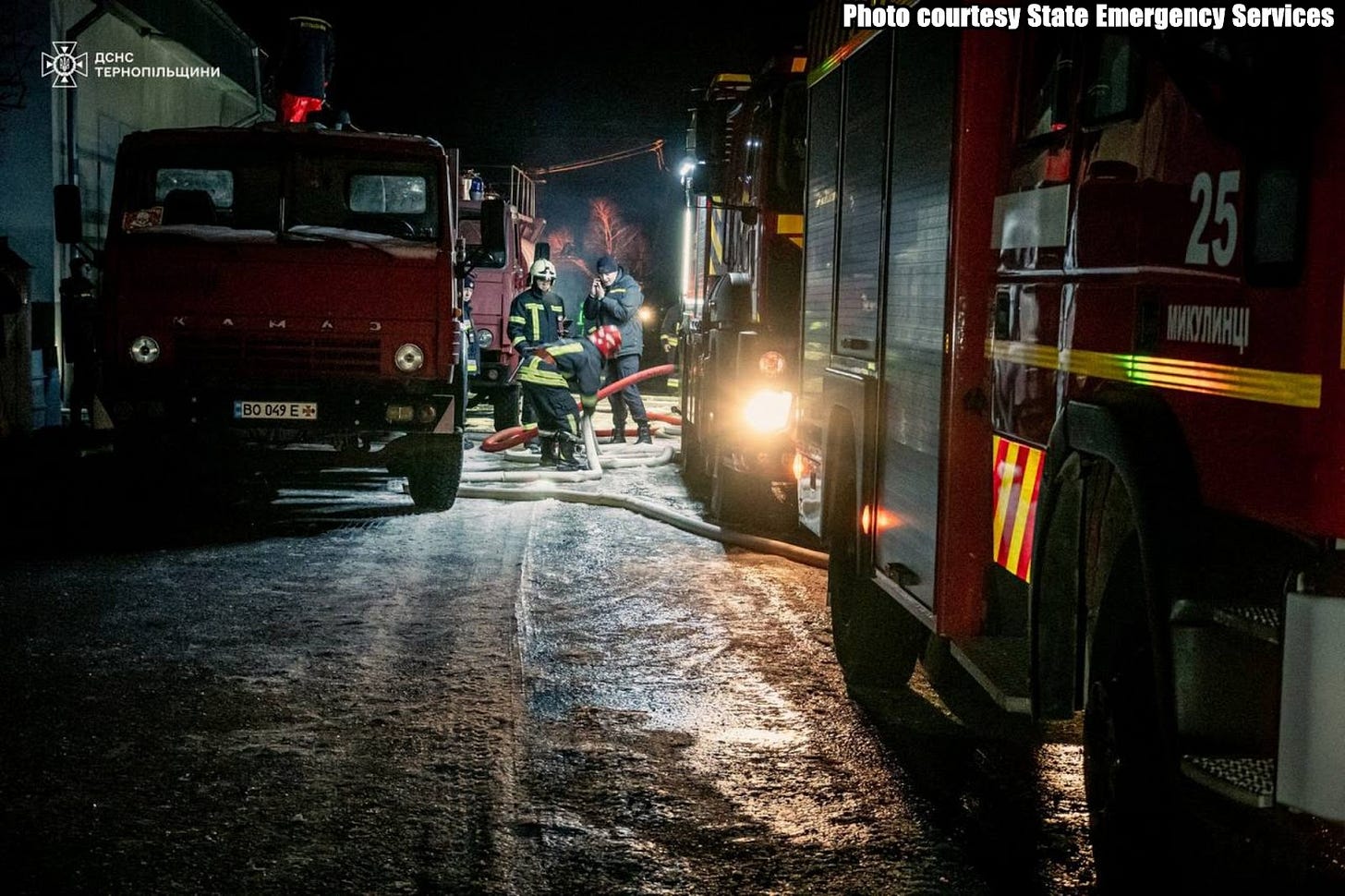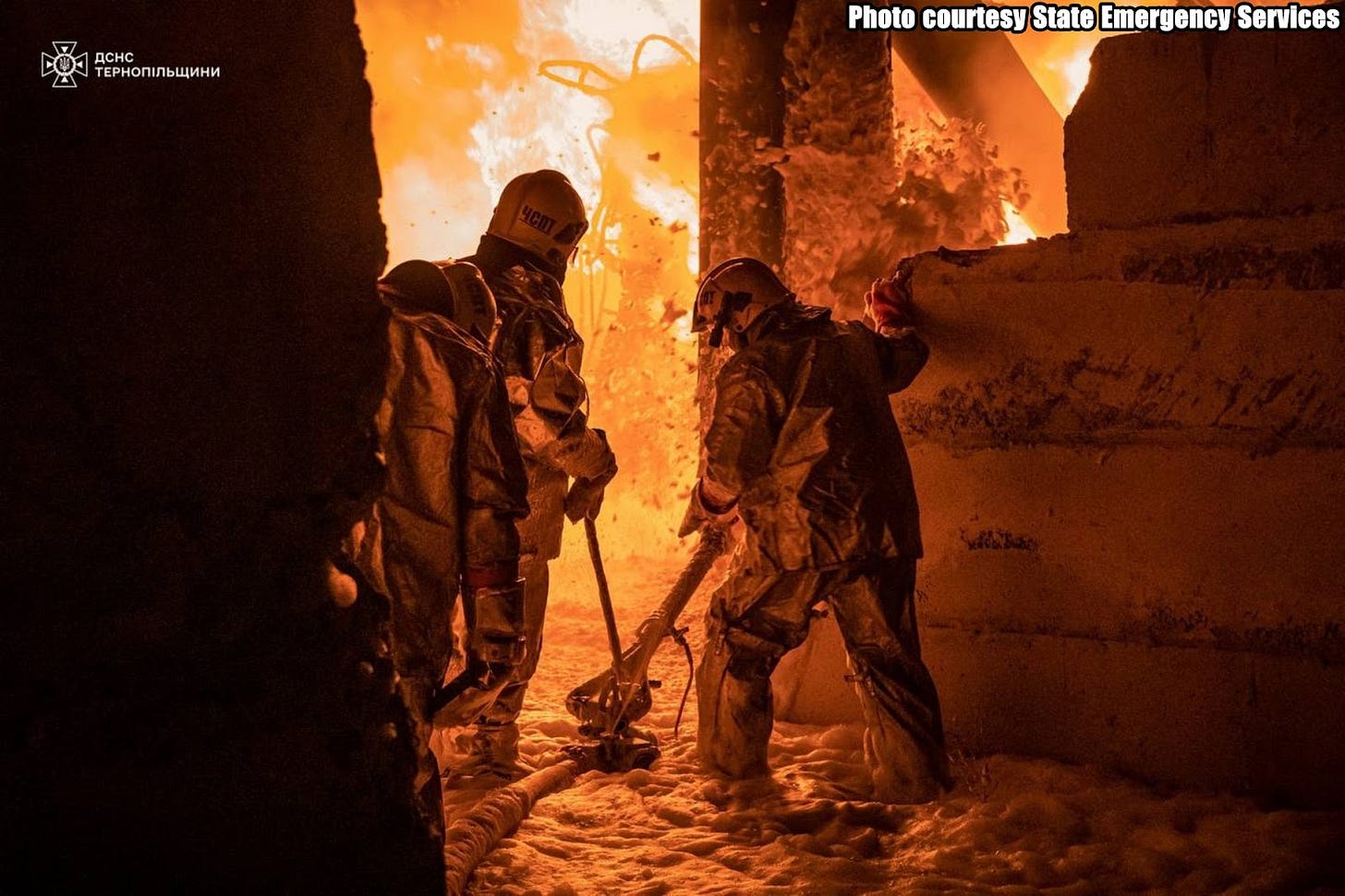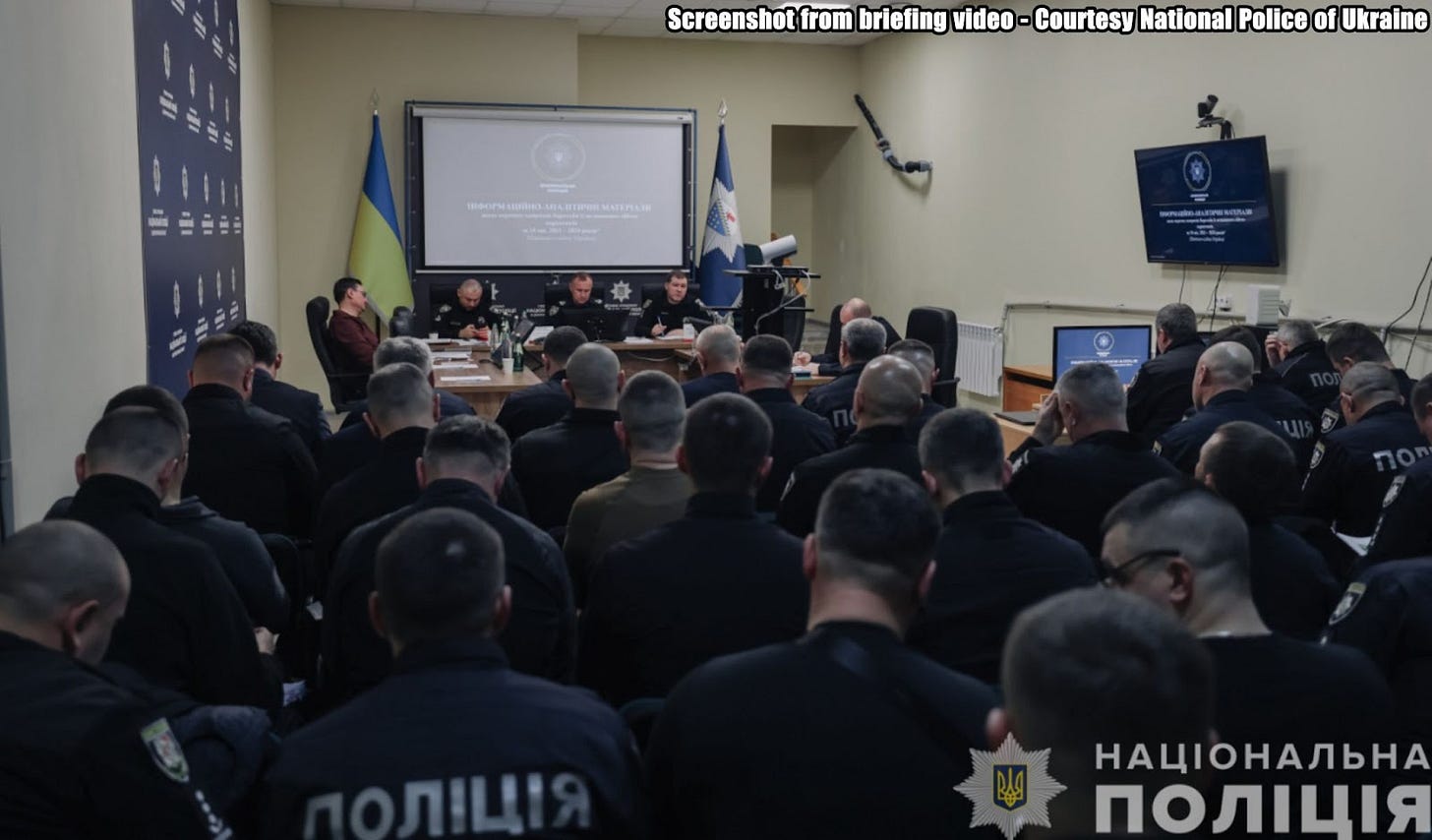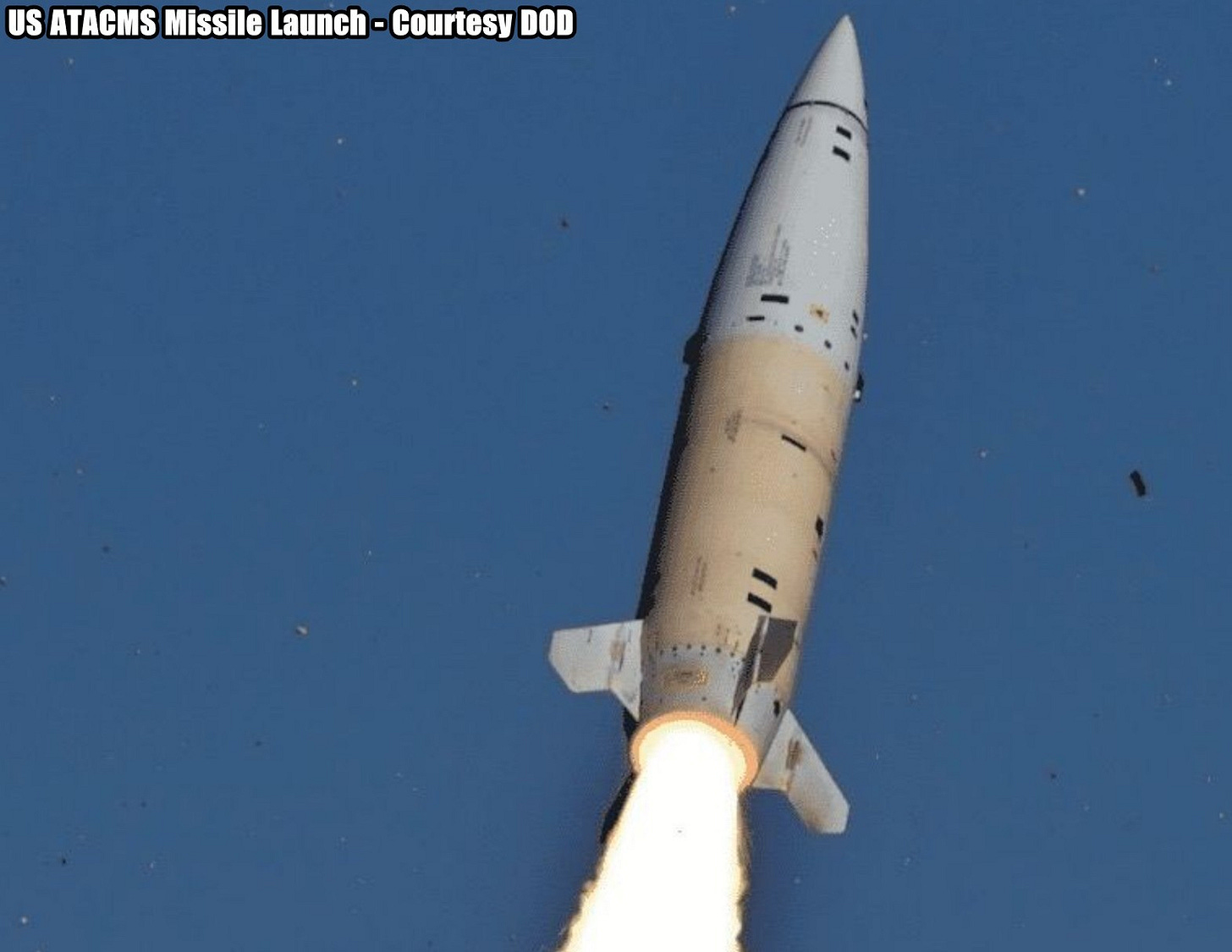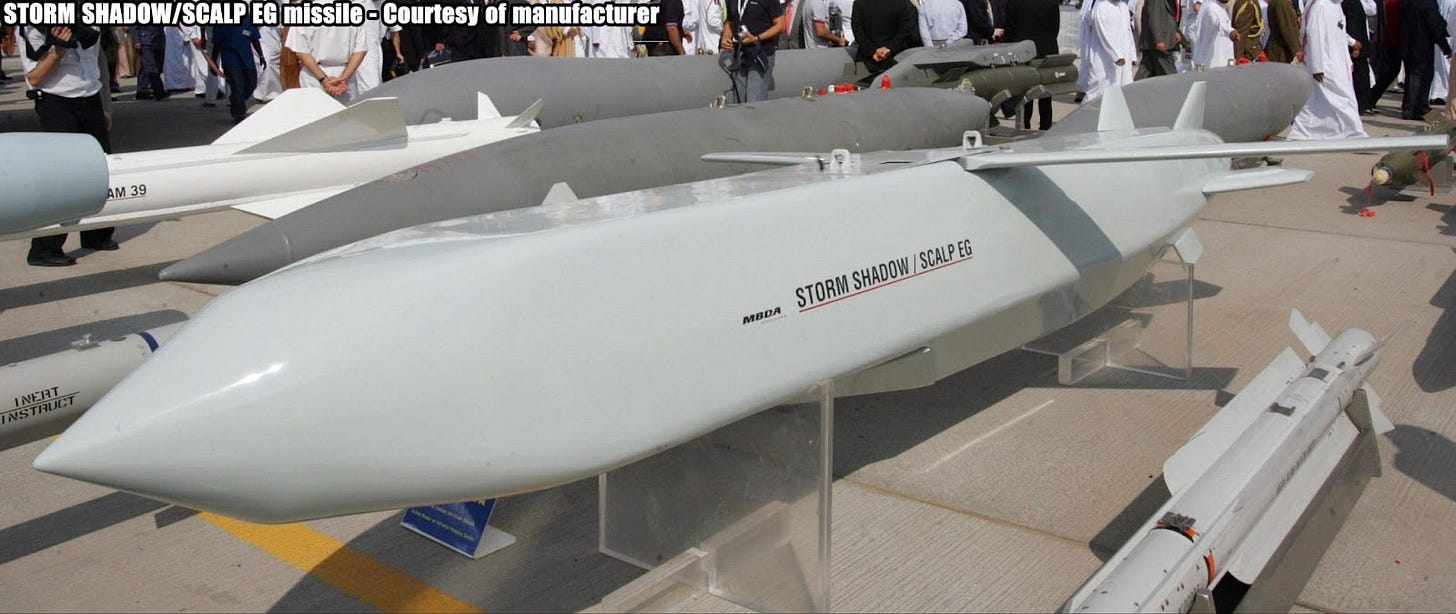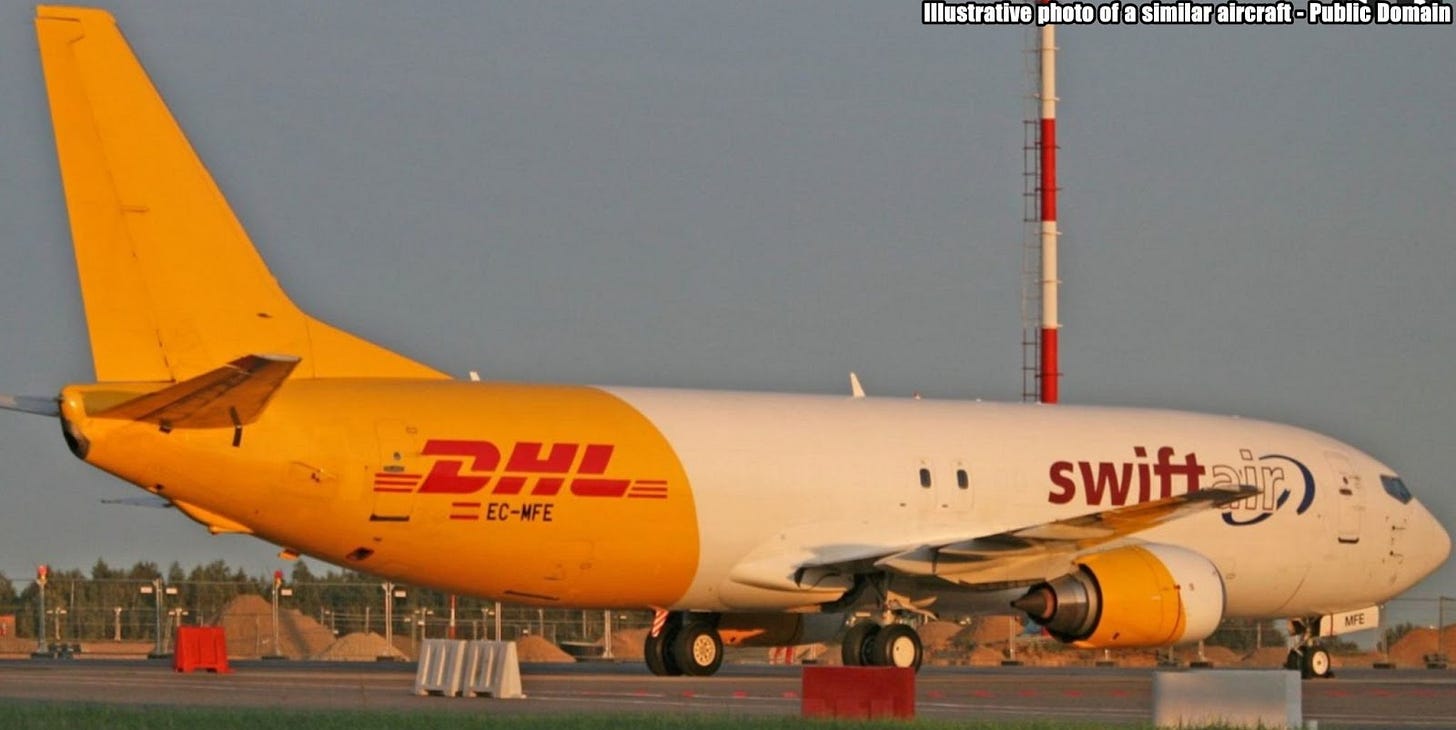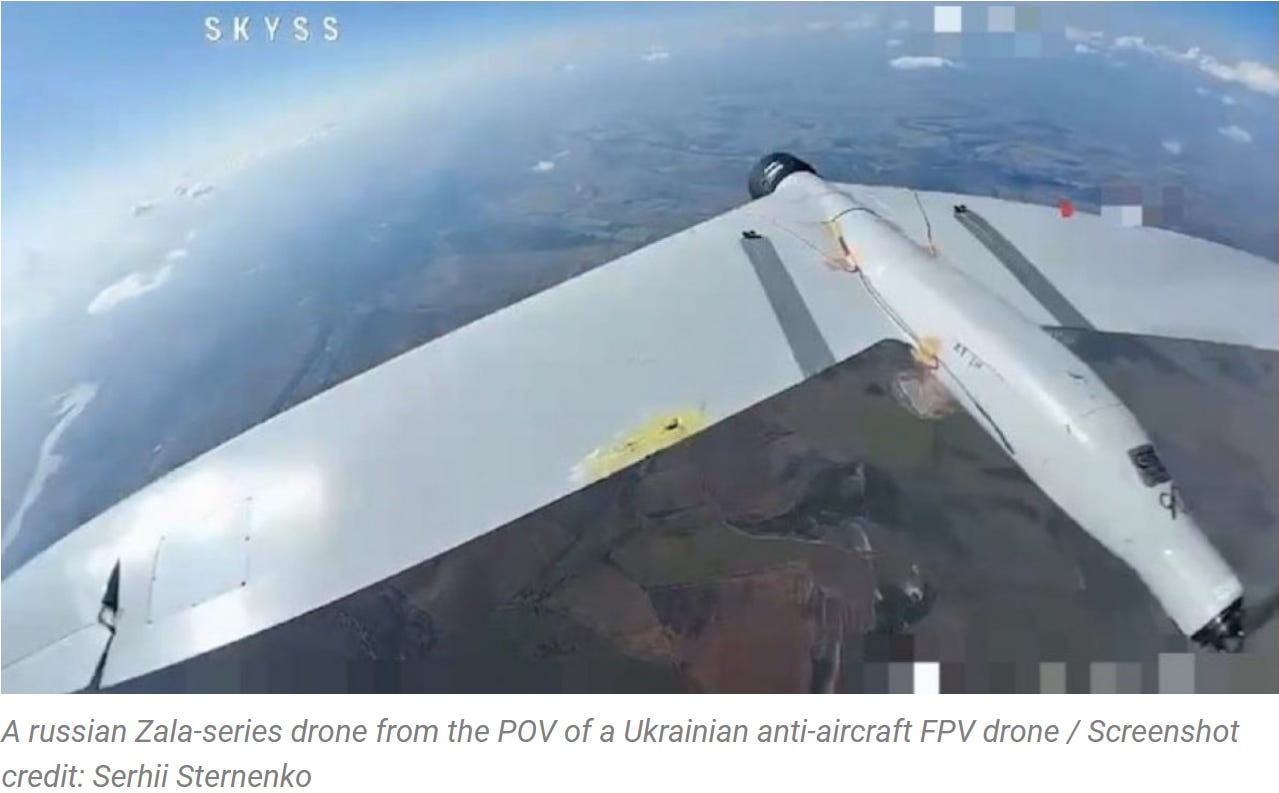Slava Ukraini! In early 2022 I began a Telegram channel aggregating news from a number of sources daily on the war in Ukraine. In June 2023 I began providing a daily draft for the Ukraine War Brief Podcast collecting news from over 70 sources daily, which formed the basis of the script. While the Podcast no longer exists I have continued to make this Brief available for my followers here on Substack for those who wish to keep up with the news from the war. A version of this Brief will also be made available on The People’s Media Substack for those who should choose to subscribe there.
All the latest news on the Russo-Ukraine War 6 days per week
ALONG THE CONTACT LINE
Russia accelerates advance in Ukraine's east
Russian forces are advancing in Ukraine at the fastest rate since the early days of the 2022 invasion, taking an area half the size of London over the past month, Reuters reported on Tuesday citing analysts and war bloggers.
Russian troops swept through swathes of Ukraine in early 2022 before being pushed back to its east and south. The 1,000 km (620-mile) front line has been largely static for two years, until the latest, smaller-scale advances that began in July.
The war is entering what some Russian and Western officials say could be its most dangerous phase, with Russia reported to be using North Korean troops in Ukraine and Kyiv now using Western-supplied missiles to strike back inside Russia.
Moscow, which like North Korea has not confirmed or denied the presence of the troops, used a hypersonic intermediate-range missile on Ukraine last week and Ukraine reported the biggest Russian drone attack on its territory so far on Tuesday.
"Russia has set new weekly and monthly records for the size of the occupied territory in Ukraine," independent Russian news group Agentstvo said in a report.
The Russian army captured almost 235 sq km (91 sq miles) in Ukraine over the past week, a weekly record for 2024, it said.
Russian forces had taken 600 sq km (232 sq miles) in November, it added, citing data from DeepState, which studies combat footage and provides front line maps.
Pasi Paroinen, a military analyst with Finland's Black Bird Group, said Russian forces had taken control of an estimated 667 sq km (257 sq miles) this month, citing data he said could include some October gains noted with a delay.
President Vladimir Putin, who replaced his defence minister in May, has repeatedly said that Russian forces are advancing much more effectively - and that Russia will achieve all its aims in Ukraine, although he has not spelled them out in detail.
Ukrainian President Volodymyr Zelenskyy has said he believed Putin's main objectives are to occupy the entire Donbas, spanning the regions of Donetsk and Luhansk, and oust Ukrainian troops from Russia's Kursk region, parts of which they have controlled since August.
A source on Ukraine's General Staff, said on Sunday that Ukraine now held around 800 of the 1,376 square kilometres of Kursk that they held initially and would hold it "for as long as is militarily appropriate".
Russia controls 18% of Ukraine including all of Crimea, just over 80% of Donbas and more than 70% of the Zaporizhzhia and Kherson regions in the south, as well just under 3% of the eastern Kharkiv region, according to open source maps.
The thrust of the advance has been in Donetsk region, with Russian forces pushing towards the town of Pokrovsk and into the town of Kurakhove. Russia has increasingly encircled territory and then pummelled Ukrainian forces with artillery and glide bombs, according to Russian analysts.
Sergei Naryshkin, the head of Russia's Foreign Intelligence Service (SVR), said on Tuesday that Russia held the complete strategic initiative on the battlefield.
Neither side publishes accurate data on their own losses though Western intelligence estimates casualties to numbers.
GSAFU Morning Report
The General Staff of the Armed Forces of Ukraine in its Operational Information update at 22:00 on Nov 25 stated that day 1007 of the full-scale invasion of the Russian Federation against Ukraine was about to begin.
During the past day, 185 combat engagements took place. Over the past 24 hours, the enemy carried out 3 missile strikes, 47 air strikes, 647 drone strikes and 3,360 artillery strikes across the positions of Ukrainian forces.
At the same time, Ukrainian soldiers continue to inflict losses in manpower and equipment on the occupying troops, exhausting the enemy along the entire front line and continue to disrupt the plans of Russian occupiers to advance deep into the territory of Ukraine.
Air Force Daily Report
On the night of November 26, 2024 (from 7:30 p.m. on November 25), the invaders attacked Ukraine with Iskander-M ballistic missiles from the Voronezh and Kursk regions. During the night attack, the enemy released a record number of "Shahed" type attack UAVs and unmanned aerial vehicles of an unknown type from the directions - Orel, Bryansk, Kursk, Primorsko-Akhtarsk - Russian Federation.
The radio engineering forces of the Air Force identified and tracked 192 air targets:
- 4 "Iskander-M" ballistic missiles;
- 188 enemy unmanned aerial vehicles.
Aviation, anti-aircraft missile units, electronic warfare equipment and mobile fire groups of the Air Force and the Defense Forces of Ukraine were involved in repelling the attack.
As of 09:00, air defense shot down 76 enemy drones in the Kyiv, Cherkasy, Kirovohrad, Chernihiv, Sumy, Kharkiv, Poltava, Zhytomyr, Khmelnytskyi, Vinnytsia, Chernivtsi, Ternopil, Rivne, Zaporizhia, Dnipropetrovsk, Odesa, and Mykolaiv regions.
95 UAVs — lost in location, presumably due to active countermeasures by the Defense Forces' EW, 5 UAVs flew in the direction of Belarus.
Unfortunately, critical infrastructure objects have been hit, and private and apartment buildings have been damaged in several regions due to a mass attack by UAVs. Previously, there were no victims or victims.
The Russian Border Incursion
Russian sources claimed that Russian forces advanced within the Kursk Oblast salient on Nov 25, but ISW has not observed confirmation of any claimed Russian advances in the area. Russian milbloggers claimed that Russian forces operating southeast of Korenevo are continuing to clear Ukrainian forces from Darino and are advancing near Tolsty Lug, in Novoivanovka, south of Zeleny Shlyakh, and in the direction of Nizhny Klin. A Russian milblogger claimed that Russian forces also advanced near Cherkasskoye Porechnoye (northeast of Sudzha) and Plekhovo (southeast of Sudzha).
ISW has not yet observed concrete evidence of Russian advances in any of these areas, however. Russian milbloggers claimed that Ukrainian forces unsuccessfully counterattacked from Leonidovo towards Novoivanovka (both southeast of Korenevo) and near Novaya Sorochina and west of Pogrebki (both northwest of Sudzha).
Elements of the 2nd Battalion of the 51st Airborne (VDV) Regiment (106th VDV Division) are reportedly advancing near Darino, while elements of the 155th and 810th naval infantry brigades (Pacific Fleet and Black Sea Fleet, respectively) are operating throughout Kursk Oblast.
The Khortytsia operational-strategic group
(Responsible for the northeastern part of Ukraine. )
Kharkiv Sector: Over the last day Ukrainian Defense Forces repelled 5 Russian attacks in the area of Kozacha-Lopan, Kudivka and Vovchansk.
-
Kupyansk Sector: Russian Forces carried out 23 offensive actions against Ukrainian defensive positions near Novomlynsk, Kolisynivka, Kruhlyakivka, Senkove, Zahryzove, Lozova and Zelenyi Hai . 4 engagements are ongoing.
-
Lyman Sector: Russian Forces carried out 11 offensive actions against Ukrainian defensive positions near Hrekivka, Yampolivka, Torske and Hryhorivka .
Siversk Sector: In this sector, over the last day, there has been no significant change in the combat environment.
Kramatorsk Sector: Russian forces carried out 4 offensive actions against Ukrainian defences in the vicinity of Chasiv Yar and Stupochky.
Kharkiv Sector: Over the last day Ukrainian Defense Forces repelled 5 Russian attacks in the area of Kozacha-Lopan, Kudivka and Vovchansk.
-
Kupyansk Sector: Russian Forces carried out 23 offensive actions against Ukrainian defensive positions near Novomlynsk, Kolisynivka, Kruhlyakivka, Senkove, Zahryzove, Lozova and Zelenyi Hai . 4 engagements are ongoing.
-
Lyman Sector: Russian Forces carried out 11 offensive actions against Ukrainian defensive positions near Hrekivka, Yampolivka, Torske and Hryhorivka .
Siversk Sector: In this sector, over the last day, there has been no significant change in the combat environment.
Kramatorsk Sector: Russian forces carried out 4 offensive actions against Ukrainian defences in the vicinity of Chasiv Yar and Stupochky.
Toretsk Sector: Over the last day Russian forces carried out 9 offensive actions with air support near Dyliivka, Toretsk and Shcherbynivka.
Toretsk Sector: Over the last day Russian forces carried out 9 offensive actions with air support near Dyliivka, Toretsk and Shcherbynivka.
The Tavria operational-strategic group
(Responsible for the central-eastern and southeastern part of Ukraine.)
Pokrovsk Sector : The highest intensity of combat over the last day was in this sector. Russian Forces carried out 51 offensive actions against Ukrainian defensive positions in the vicinity of Myrolyubivka, Promin, Lysivka, Dachenske, Pustynka and Pushkine.
Kurakhove Sector: Over the last day in this district Russia conducted 45 offensive actions in the vicinity of Novodmytrivka, Zorya, Sontsivka, Berestky, Kurakhove, Dalnje, Uspenivka, Hannivka and Yelyzavetivka. 1 engagement is ongoing.
Vremivka Sector: Russian forces made 13 attempts to break through Ukrainian defences in the vicinity of Novodarivka Rivnopil, Sukhi Yaly, Kostiantynopolske
Orikhiv Sector: In this sector, over the last day, there has been no significant change in the combat environment. Russian forces made 2 unsuccessful attempts to dislodge Ukrainian units from their defensive positions near Novoandriivka.
The Odesa operational-strategic group
(Responsible for Kherson, Qırım, (also known as Crimea) and the Black Sea.)
Prydniprovsk Sector: In this sector, over the last day, there has been no significant change in the combat environment. Russian forces made 3 unsuccessful attempts to dislodge Ukrainian units from their positions on the left bank of the Dnipro.
TEMPORARILY OCCUPIED TERRITORIES
Nothing major to report.
THE HOME FRONT
Russian attacks against Ukraine kill 2, wound 45 over past day
Russian attacks against Ukraine injured at least 45 people and killed at least two over the past day, The Kyiv Independent reported on Nov. 26 citing regional authorities.
In the town of Kupiansk, a Russian drone injured a 66-year-old man after crashing near an educational institution building.
An air raid alert in Kyiv lasted for seven hours last night while Ukrainian air defenses downed Russian drones over the city. No casualties were reported, the regional military administration said.
During a night attack on Ternopil Oblast, a critical infrastructure facility was damaged, causing blackouts, the regional military administration reported.
One person died, and four were injured as a result of the Russian military’s attack on critical infrastructure and residential areas of Kherson Oblast, Governor Oleksandr Prokudin reported on his Telegram channel.
One person was killed and another injured in Donetsk Oblast, Governor Vadym Filashkin reported on his Telegram channel.
In Dnipropetrovsk Oblast, a 48-year-old woman and a 54-year-old man were injured in Nikopol due to a kamikaze drone strike, Governor Serhii Lysak reported on his Telegram channel. A gas station and a car were also damaged in the attack.
In Odesa, the Russian military struck the center of the city, injuring 11 people and leaving one woman in a serious condition, Governor Oleh Kiper reported on his Telegram channel.
The missile strike damaged residential buildings, cars, a dentist's clinic, a beauty salon, shops, and cars. Two educational institutions—a school and a university gym—were also damaged.
In Zaporizhzhia Oblast, a 74-year-old man was wounded following a Russian strike, Governor Ivan Fedorov reported on his Telegram channel.
Russia strikes Ukraine's critical infrastructure in war's largest drone attack
Russian forces staged their largest ever drone attack on Ukraine overnight, cutting power to much of the western region of Ternopil and damaging residential buildings in Kyiv region, Reuters reports citing Ukraine's officials on Tuesday.
Intensified nightly drone attacks on Ukrainian cities are coinciding with a major push by Russia along frontlines in Ukraine's east, where Russian forces have made some of the largest monthly territorial gains since 2022.
Of 188 drones used overnight, Ukraine shot down 76 and lost track of 96, likely due to active electronic warfare, the air force said. Five drones headed towards Belarus.
"The enemy launched a record number of Shahed attack UAVs and unidentified drones ...," it said, in addition to using four Iskander-M ballistic missiles. Russia uses cheaply-produced "suicide" drones and low-cost "decoy" drones, which tie up Ukrainian air defences.
"Unfortunately, there were hits to critical infrastructure facilities, and private and apartment buildings were damaged in several regions due to the massive drone attack," an air force statement said, adding that no casualties had been reported.
The attack damaged the power grid in Ternopil, a major city in western Ukraine, and cut power to around 70% of the region, governor Vyacheslav Nehoda said on national television.
Ternopil, some 220 km (134 miles) east of NATO-member Poland, and the surrounding region had a population of more than a million before the February 2022 Russian invasion, which drove many Ukrainians west.
"The consequences are bad because the facility was significantly affected and this will have impact on the power supply of the entire region for a long time," Nehoda said.
The attack also cut off water and disrupted heat supplies, the head of the regional defence headquarters Serhiy Nadal said via the Telegram messaging app.
Nehoda said the emergency services had mostly restored the water supply by morning and the local authorities were planning to introduce planned power cuts in the attack's aftermath.
Ukraine's national power grid operator Ukrenergo said emergency power cuts were in effect in the region and that engineers were working to restore power supply.
Electric buses that service the city would be replaced with regular buses and generators would help with power shortages in schools, hospitals and government institutions, Nadal said.
Russia also targeted the capital Kyiv overnight, the military administration of the city said on Telegram, adding that air defence units destroyed more than 10 Russian drones.
Falling debris damaged four private residences, two high-rise apartment buildings, two garages and a car in the region surrounding the capital, its governor Ruslan Kravchenko said.
The drones approached Kyiv in waves and from different directions, but there was no damage or injuries in the city, Serhiy Popko, head of Kyiv's military administration said on Telegram.
Most of Ukraine was under overnight air raid alert for hours, air force data showed.
Russian attack on Kharkiv with S-400 missile injures 23 people
A Russian S-400 missile struck Kharkiv’s Kyiv district on the morning of 25 November, leaving 23 civilians injured, with 14 requiring hospitalization, Euromaidan Press reports citing Kharkiv Governor Oleh Syniehubov.
Russia continues its deliberate daily air attacks on residential areas in attempts to terrorize civilians and damage civilian infrastructure. Kharkiv, the second largest city of Ukraine, suffers almost daily Russian attacks.
According to Syniehubov, the missile hit the ground, causing a fire that affected three vehicles and the facade of a two-story non-residential building, and over 40 buildings. The blast also damaged windows of nearby residential buildings.
In the broader Kharkiv Oblast, Russian forces targeted settlements in Kupiansk, Borivske, and Lozova districts over the past day, though no casualties were reported, according to the Regional Military Administration.
Ukrainian forces repelled 11 Russian attacks near Novomlynsk, Kolisnykivka, Kruhlyakivka, Senkove, and Lozova in the Kupiansk direction, while Russian forces conducted an airstrike on Bohuslavka.
Ukrainian police has detained 179 arsonists recruited by Russian services in 2024
Russia's sabotage activities to recruit Ukrainian citizens through Telegram channels are one of the main factors of destabilisation in Ukraine: 179 arsonists have already been detained in 2024. Andrii Niebytov, Deputy Head of the National Police of Ukraine stated on Nov 26.
"These are arsons of military vehicles, railway infrastructure, and state-owned companies. The task of the criminal police is to quickly identify and bring the perpetrators to justice to prevent further crimes. In ten months, police have detained 179 people who committed arson attacks which were requested by Russian secret services."
Another of the police priorities, emphasized by the Minister of the Interior and the Chairman of the National Police – combating the illicit trafficking of weapons and preventing its leakage abroad. Currently, no unit of weapons has entered the EU. During the 10 months of this year, operatives seized 4,247 units of firearms, found 137 weapons, and exposed 903 facts about the sale of illegal weapons.
Niebytov noted that the National Police maintains a stable crime situation in the context of war. Police officers in the east are working under missile attacks and targeted FPV drone attacks, solving crimes and rescuing people.
Ukraine's Defense Ministry investigating faulty mortar shells following complaints
An interdepartmental commission is investigating the supply of faulty 120 mm mortar shells to Ukrainian forces after multiple reports of them misfiring, the Defense Ministry announced on Nov. 26. The Kyiv Independent reports.
The statement comes following complaints and videos shared on social media that show the mortar shells not exploding or failing to hit their targets.
The ministry said it had withdrawn the batches of ammunition in question and would instead provide Ukrainian forces with imported shells.
The Dzerkalo Tyzhnia news outlet reported in its investigation that this concerns 100,000 shells that would last for six months of front-line use, causing delays before the imported shells arrive.
Artillery and mortar shells are crucial items on the front as Ukraine already struggles to match up with the better-stocked Russian forces.
According to Dzerkalo Tyzhnia, the supply of the shells in question was a result of a deal between the Defense Ministry and the Strategic Industries Ministry to purchase ammunition from a domestic producer and thus decrease dependence on foreign supplies.
The outlet did not name the factory commissioned to manufacture the shells but said it was part of the state-owned defense conglomerate Ukroboronprom and was often targeted by Russian attacks.
The media investigation highlighted the Defense Ministry's supposedly inadequate quality control process. Warnings raised by some officials regarding the plant's ability to produce detonators for the shells "disappeared" during the process, and military officials failed to report initial problems with the shells that surfaced in September.
In its statement, the Defense Ministry stressed that the Strategic Industries Ministry was responsible for carrying out the order. Preliminary conclusions named low-quality charges and poor storage conditions as possible causes.
The State Bureau of Investigation has launched a criminal investigation, and "appropriate personnel decisions will be made regarding the responsible officials," the statement read. The ministry promised new measures to improve quality control and improve the inspection process at all stages.
Ukraine's defense sector has been plagued by several major procurement scandals throughout the full-scale war.
The two most notorious scandals, one regarding inflated prices for food supplies and the other connected to low-quality winter jackets, prompted the dismissal of former Defense Minister Oleksii Reznikov.
RUSSIAN WORLD
Russia acknowledges 3 Ukrainian ATACMS strikes and promises retaliation
The Russian Federation's Ministry of Defence has acknowledged that on 23 and 25 November, three ATACMS long-range missiles launched by Ukraine's Armed Forces reached their targets in Kursk Oblast. Ukrainska Pravda reports citing Russian state propaganda sources.
RIA Novosti, referencing the Russian Ministry of Defence, claims that during the last three days, the Armed Forces of Ukraine have attacked targets in Kursk Oblast twice using long-range Western weapons.
Five ATACMS missiles entered the village of Lotarevka, in the vicinity of a S-400 anti-aircraft missile battalion's position on 23 November. Two of them reportedly struck the target, while three were apparently destroyed.
The Ukrainian Armed Forces launched an ATACMS missile attack on the Kursk-Vostochny airfield on 25 November. Seven missiles are said to have been shot down, while one reportedly made it to the target. According to the Russian Ministry of Defence, falling missile fragments caused "minor injuries" to two servicemen.
Additionally, it is stated that "it was confirmed that the Armed Forces of Ukraine attacked with American-made ATACMS missiles" after the site of the attack was examined.
Russia’s Defence Ministry stated that it was "preparing actions in response to the ATACMS attacks in Kursk Oblast."
INTERNATIONAL NEWS
UK Sent Ukraine Dozens of Storm Shadows Ahead of Strikes in Russia
The UK government recently supplied Ukraine with dozens more Storm Shadow cruise missiles, according to people familiar with the matter, a first under Prime Minister Keir Starmer, who has pledged continued support for the country’s war against Russia.
The deliveries, which were not publicly announced, took place several weeks ago and were ordered after Kyiv ran low on the long-range missiles, said the people, who asked not to be identified discussing security issues.
They were sent before the recent decision by the US and the UK to allow Ukraine to fire long-range missiles at targets inside Russia. The people declined to say exactly when they arrived or give a precise number, citing the need for operational security.
“We do not comment on operational detail, to do so would only benefit” Russian President Vladimir Putin, the Ministry of Defense said in a response to questions, adding the UK’s support for Ukraine is “ironclad.”
Ukrainian forces fired the British Storm Shadow missiles at targets inside Russia for the first time last week, a day after launching US-made Army Tactical Missile Systems, or ATACMS, a military facility in the western Bryansk region.
The decisions by London and Washington to allow the strikes, which Kyiv had long requested, came in response to the Kremlin deploying North Korean troops to fight against Ukraine, according to officials from both governments.
Yet the move has also been seen as a way for outgoing President Joe Biden and allies to strengthen Ukraine’s hand in any negotiations with Moscow, which are are possible next year as President-elect Donald Trump has vowed to end the war quickly.
Starmer said at the Group of 20 summit in Brazil on Nov. 20 that his government was “doubling down” on its support for Ukraine, but declined to give specifics.
Storm Shadows are precision-guided, air-launched missiles with a range of more than 250 kilometers (155 miles). They fly close to the terrain at high speeds, using a combination of so-called inertial navigation with Global Positioning System and terrain-reference navigation, according to a fact sheet on the website of their manufacturer MBDA.
The UK government hasn’t said how many Storm Shadow missiles it has given Ukraine during the war, and doesn’t regularly announce transfers. Ukraine had previously used them against Russian forces in the Black Sea.
The last time the Ministry of Defence confirmed a consignment of the missiles to Ukraine was in April, under the administration led by Rishi Sunak.
Lithuanian president on plane crash in Vilnius: Russia's actions raise suspicions of involvement
Lithuanian President Gitanas Nausėda stated that any rare accidents in Europe now naturally raise suspicions of sabotage due to Russia's destructive behaviour. However, he emphasised that it is too early to speculate on the causes of the plane crash over Vilnius. Ukrainska Pravda reports.
"I’ll repeat once again: of course, there is a possibility that this could be sabotage, and it cannot be ruled out. As a result, it will be thoroughly investigated. We must acknowledge that, given Russia’s actions and destructive behaviour, almost every aviation disaster will now be examined through the lens of potential Russian intelligence involvement."
A Boeing 737-476(SF) cargo plane crashed near Vilnius Airport on the morning of 25 November. The aircraft, owned by the Spanish airline Swiftair, was transporting DHL parcels and was en route from Leipzig, Germany.
One of the pilots died in the crash, while three other crew members survived.
The incident has drawn significant attention amid reports that Russia had planned operations involving the sabotage of cargo and passenger planes. It has also emerged that packages that caught fire at DHL logistics centres in Germany and the UK were sent from Lithuania.
MILITARY & TECH
Anti-Aircraft FPV Drones Project Has Destroyed Over 400 russian UAVs
After making an appearance late summer 2024, the FPV interceptors as an air defense weapon have exceeded wildest expectations, Defense Express reports.
Ukrainian FPV drones are effectively solving yet another task: fighting the russian reconnaissance UAVs swarming the airspace over the near-frontline areas and beyond. Just one project led by the volunteer community of Ukrainian activist Serhii Sternenko has harvested more than 400 russian destroyed since inception around August 2024.
Over these past three months, the project labeled Nebesnyi Rusoriz (roughly: Skyborn russian-Slaughterer), has taken down 211 Zala-series, 137 Supercams, 46 Orlan-series unmanned aerial vehicles, and 7 Lancet loitering munitions, according to a report published by Sternenko.
Defense Express notes, this is not the only volunteer program aimed at supplying anti-aircraft drones to the Ukrainian army, therefore the totality of russian reconnaissance UAVs downed by the new technology is even greater. Objectively, these results contrast with the initial skepticism surrounding the prospects of using cheap FPV drones as an air defense weapon.
For instance, Defense Express cited a thesis by Ukrainian specialists from the military design bureau KB Pivdenne listing down strict requirements for an unmanned aerial interceptor, with particular emphasis on the recommended speed of such a product: 450 km/h (cruising) to 800 km/h (max) in order to be effective.
While the specifications of the FPVs offered by Sternenko and his team are unknown, they appear to have a much simpler design, yet the published drone downing statistics speaks volumes of their performance and — no less importantly — effect on the battlefield.
After all, for the Russian invasion forces, drones like Zala, Supercam, and Orlan are an essential component of the reconnaissance-and-strike framework, where the drone is responsible for detecting a target and passing on its real-time coordinates to the long-range weapon systems, such as the Smerch rocket artillery or the Iskander short-range ballistic missile. Leaving the Russians without their airborne eyes has a devastating impact on their ability to decision-making and deliver precision strikes.
For illustration, let's recall how just this June Ukraine had to take its Yak-52 trainer aircraft to the sky to intercept the same reconnaissance UAVs, and one of the pilots had to shoot it down with a rifle. On the other hand, FPV drones remain an unsophisticated and scalable weapon with traditional benefits like mass production, low cost, and widespread presence.
Although we should not forget about their drawbacks such as extreme reliance on the operator's skill and effective reconnaissance and intelligence network to detect enemy UAVs, as well as satisfactory quantities of drone detection/warning equipment.
Nonetheless, the use of anti-aircraft FPV drones to destroy enemy scout drones offers a very advantageous cost-benefit ratio: the difference in price between the weapon and the target makes it worthwhile with capital W. Specifically, an Orlan-10 reconnaissance UAV costs approximately $106,000, while a typical FPV drone is in the $700 to $1,000 range, meaning a 100–150 times difference.
For that reason, Russian armed forces are making great efforts to invent countermeasures against Ukrainian anti-aircraft FPV drones, starting from weird-looking deceptive camouflage to integrating EW equipment or AI-powered evasion techniques into their reconnaissance UAVs.
That’s it for today’s Brief folks if you would like to keep up with events in Ukraine daily please consider subscribing.
Feel free to share this update with your friends. Heroyam Slava!






